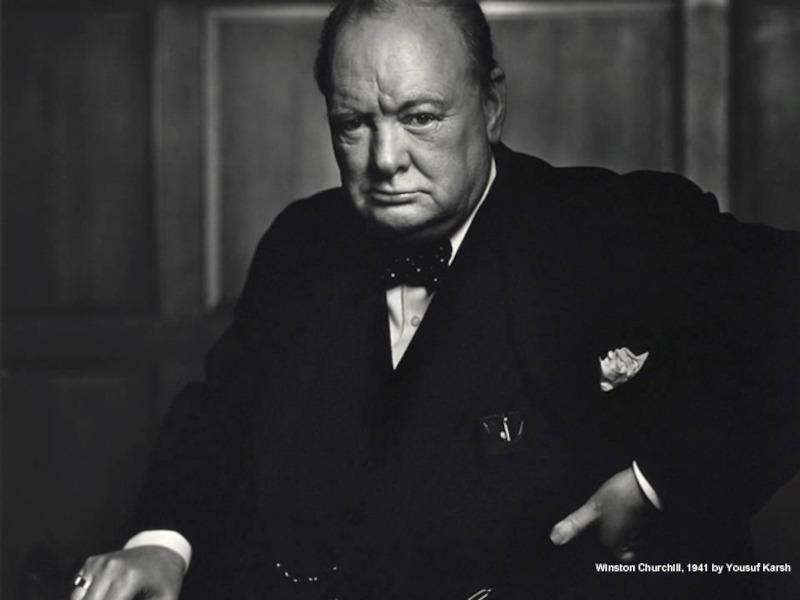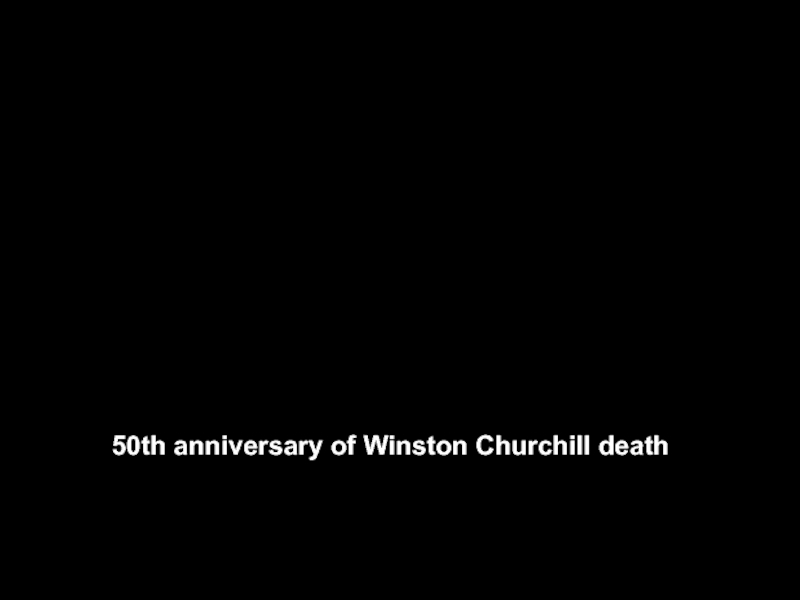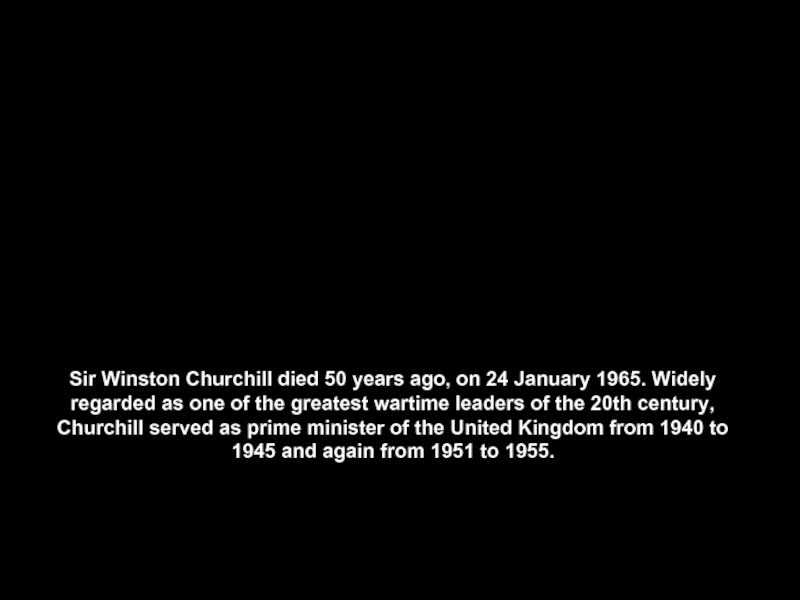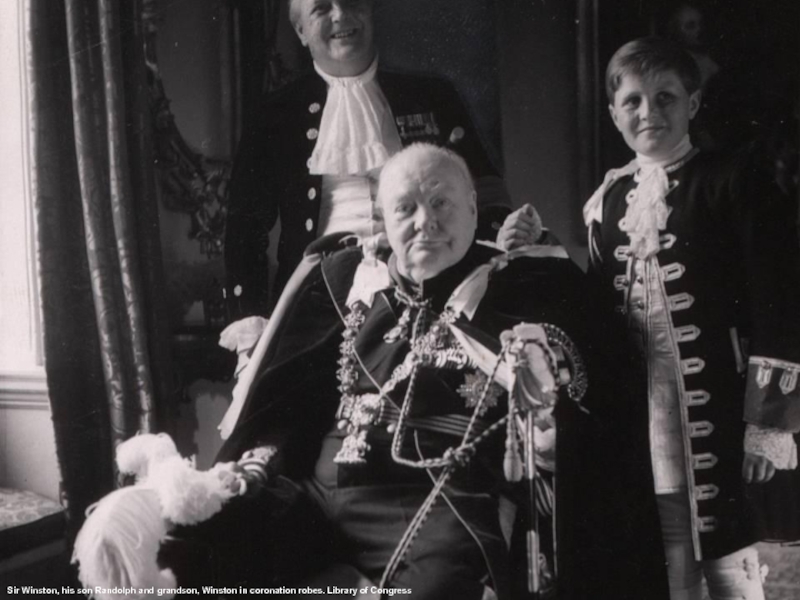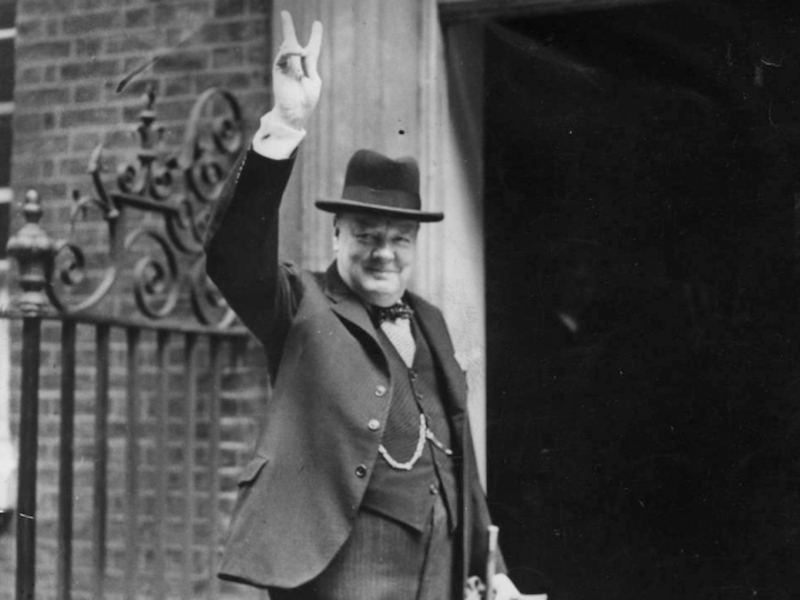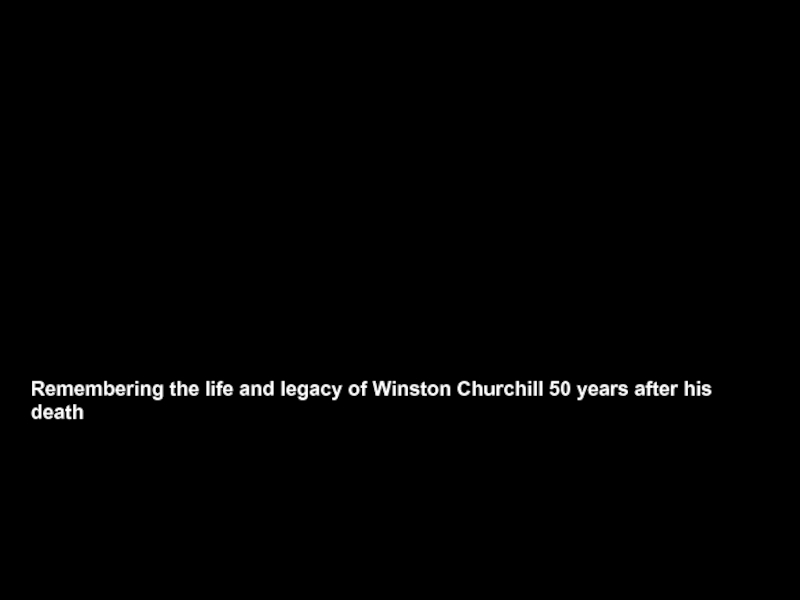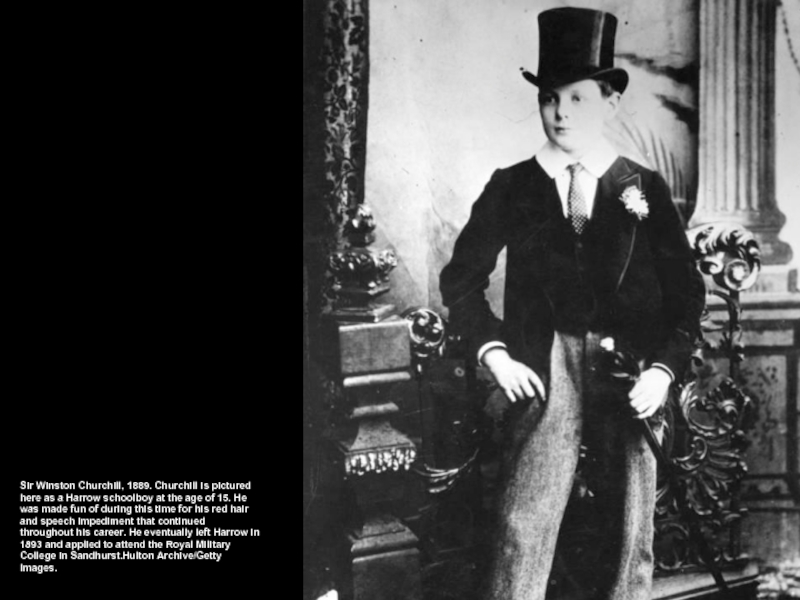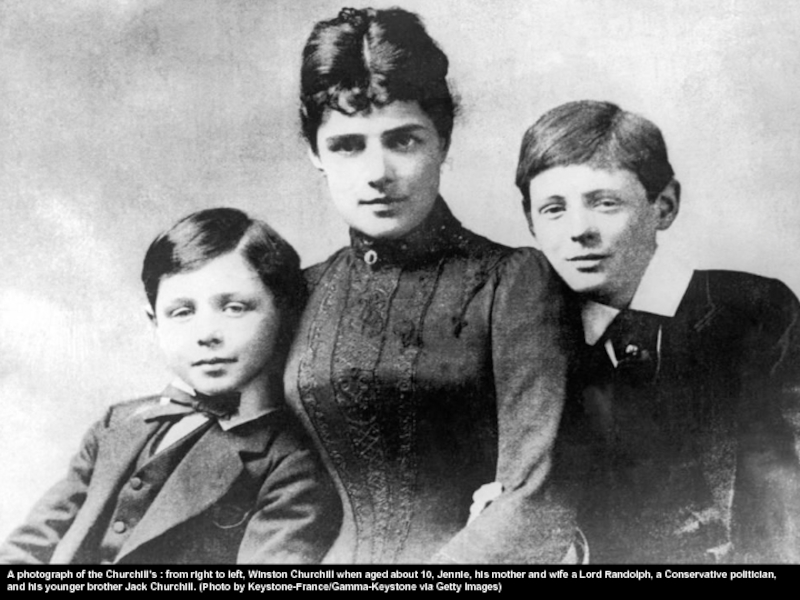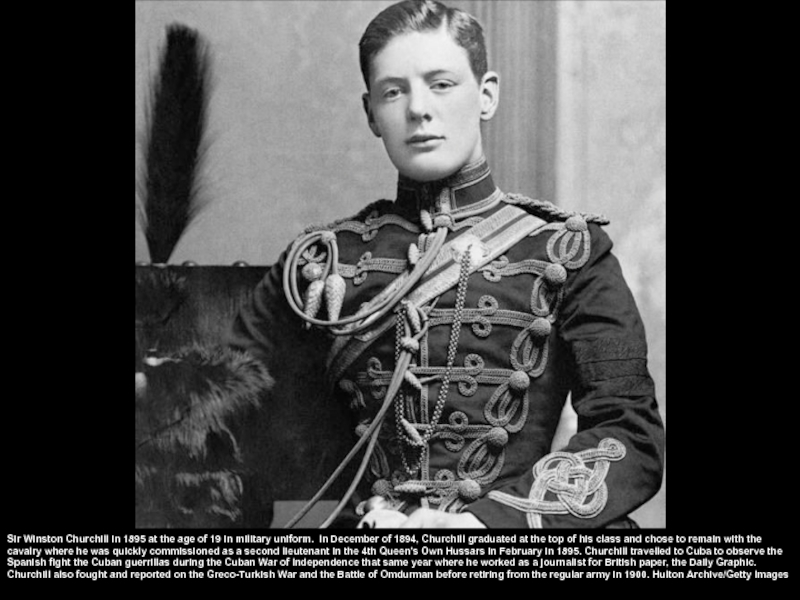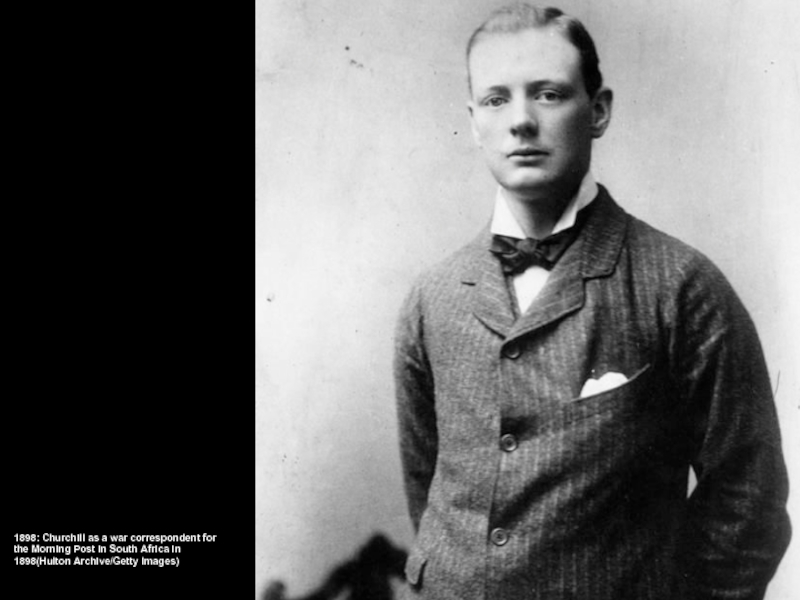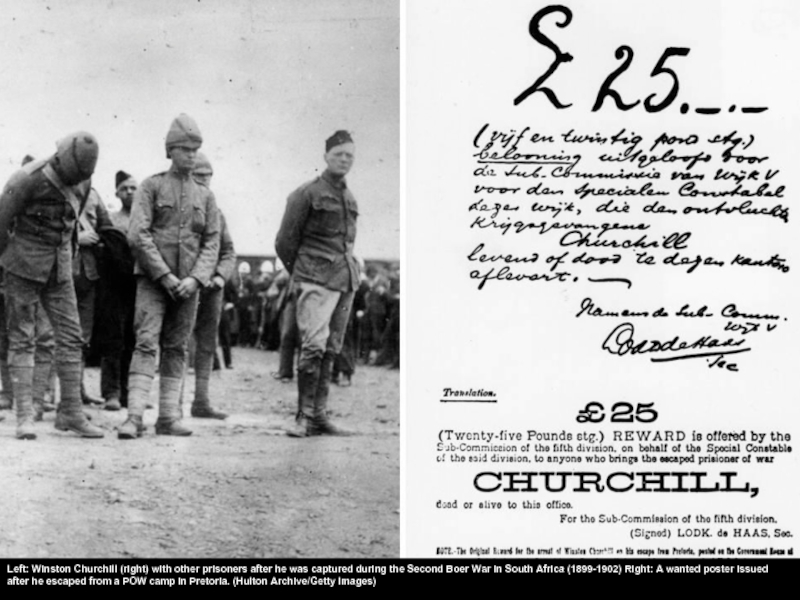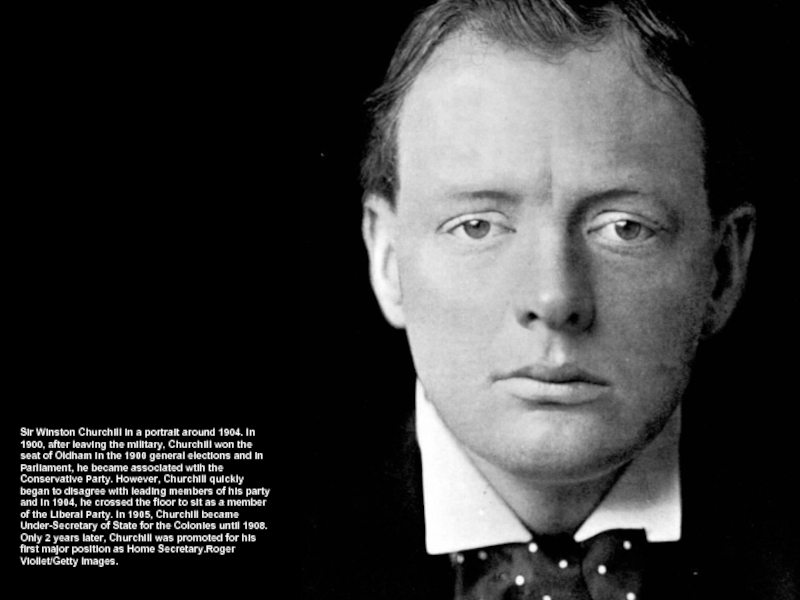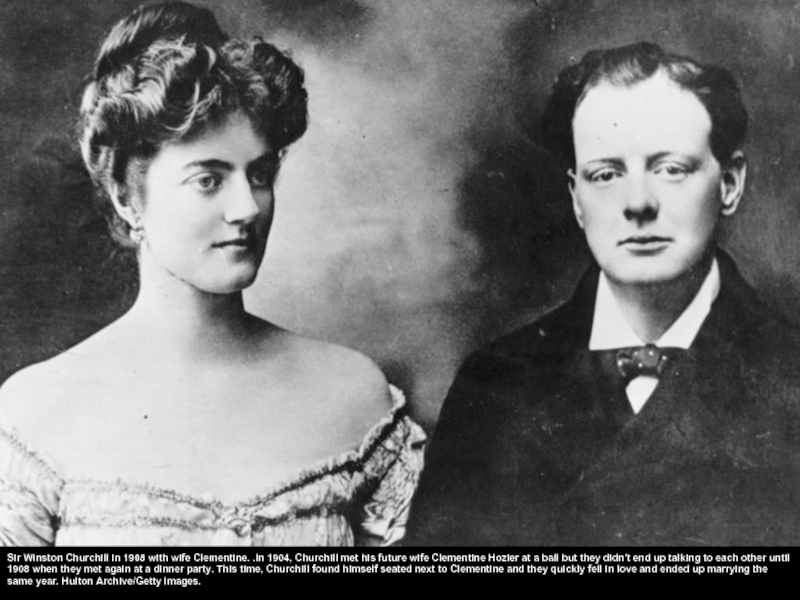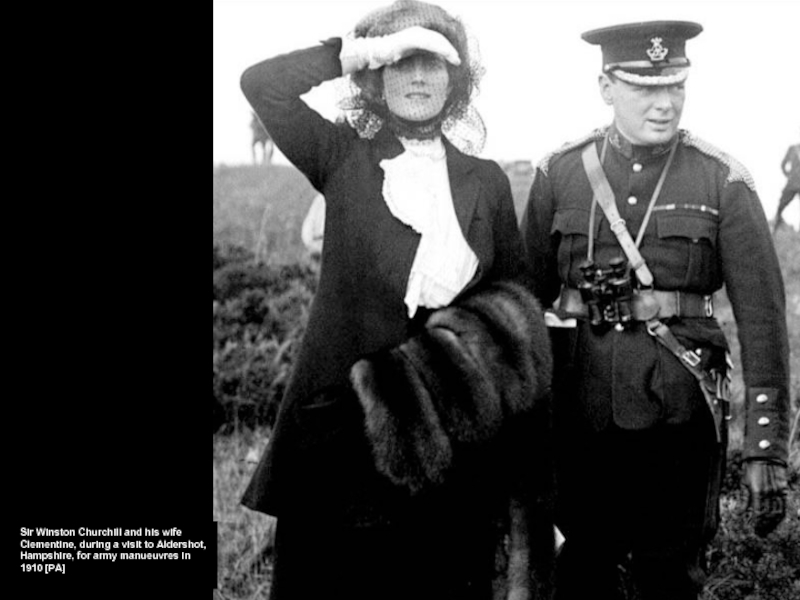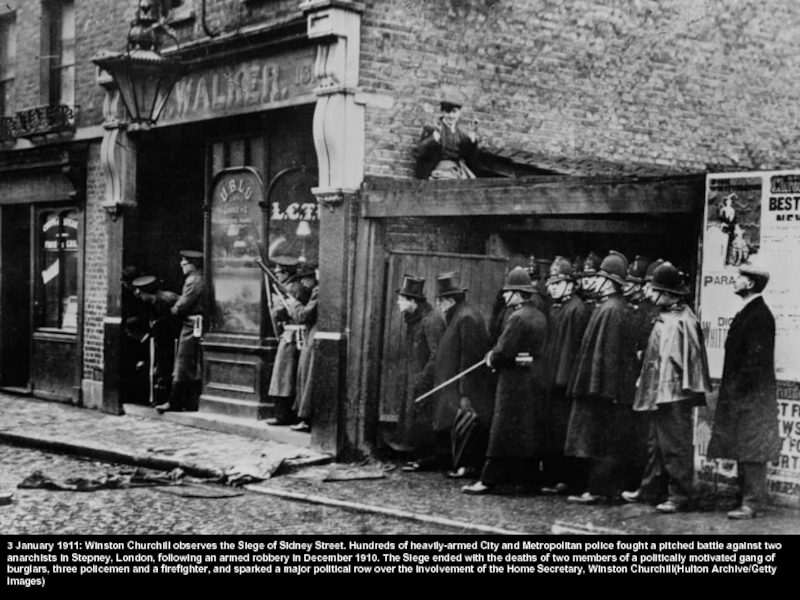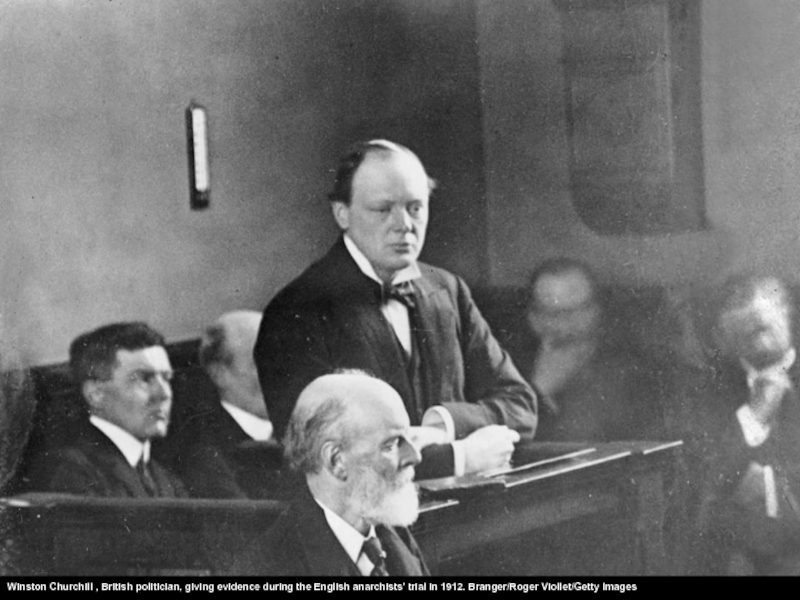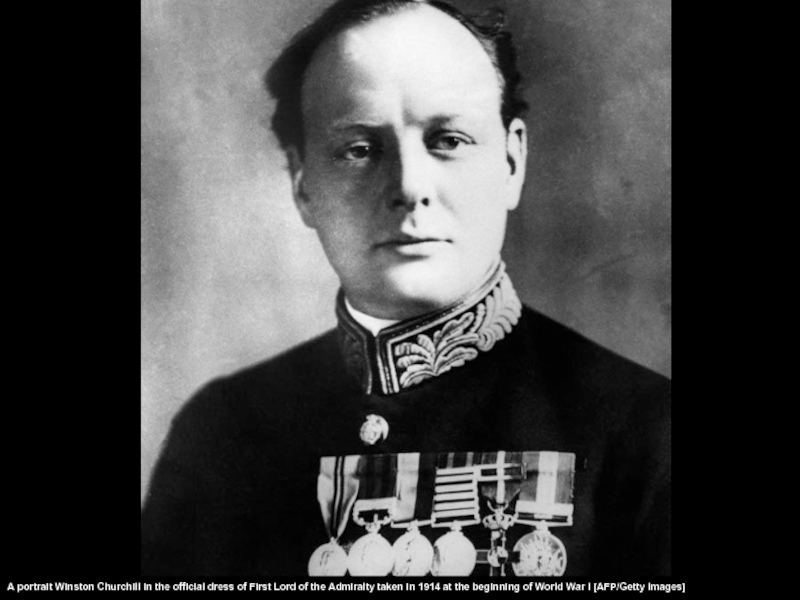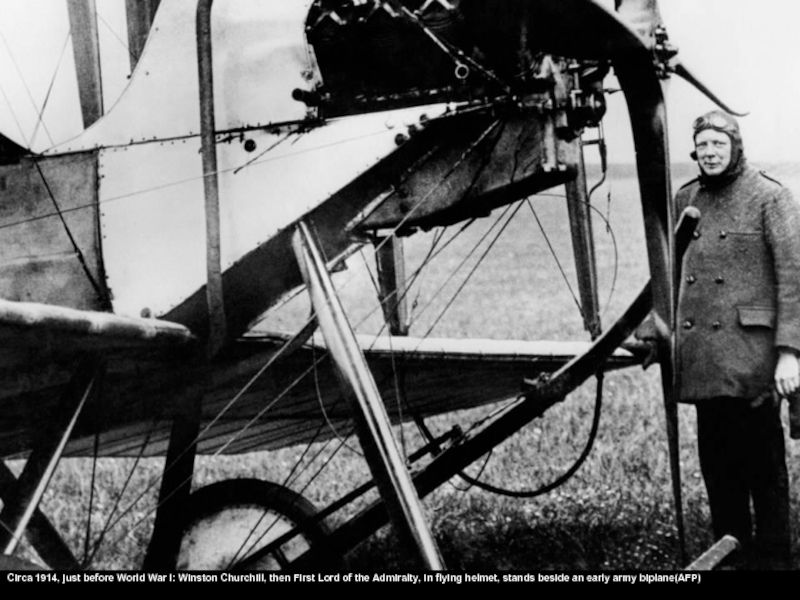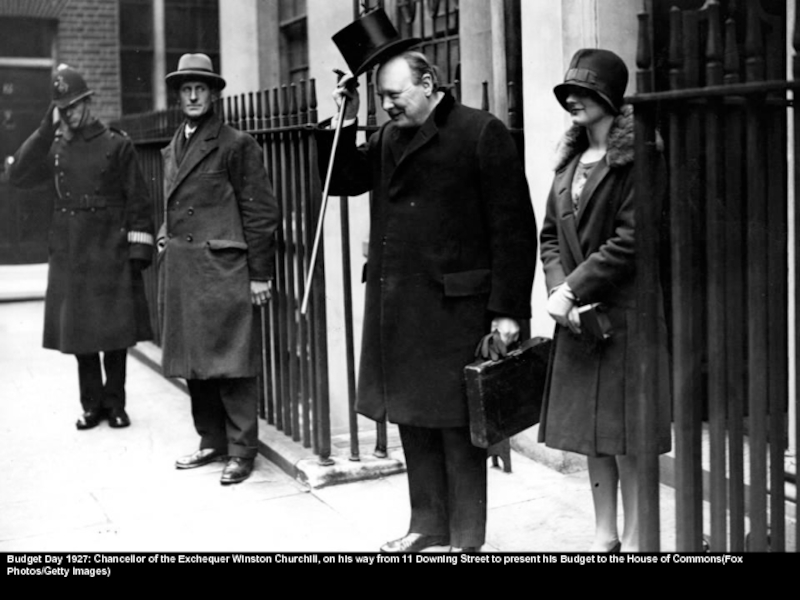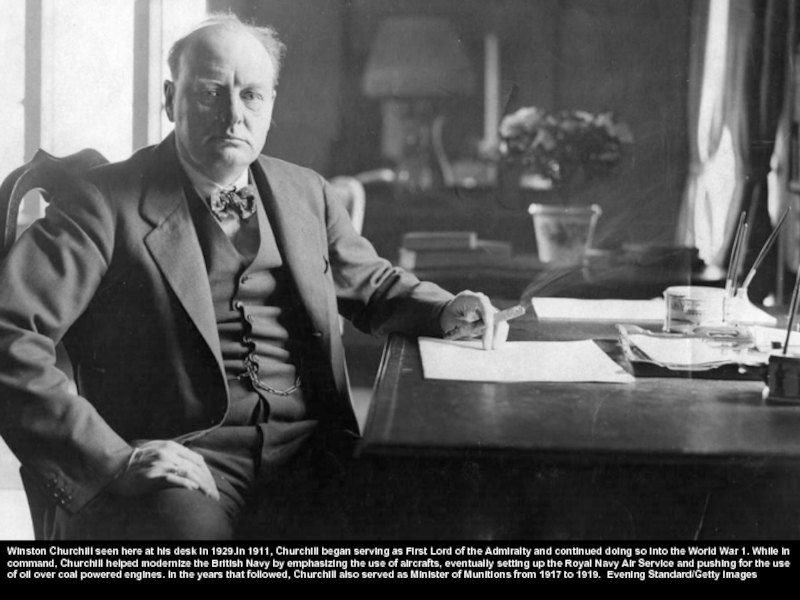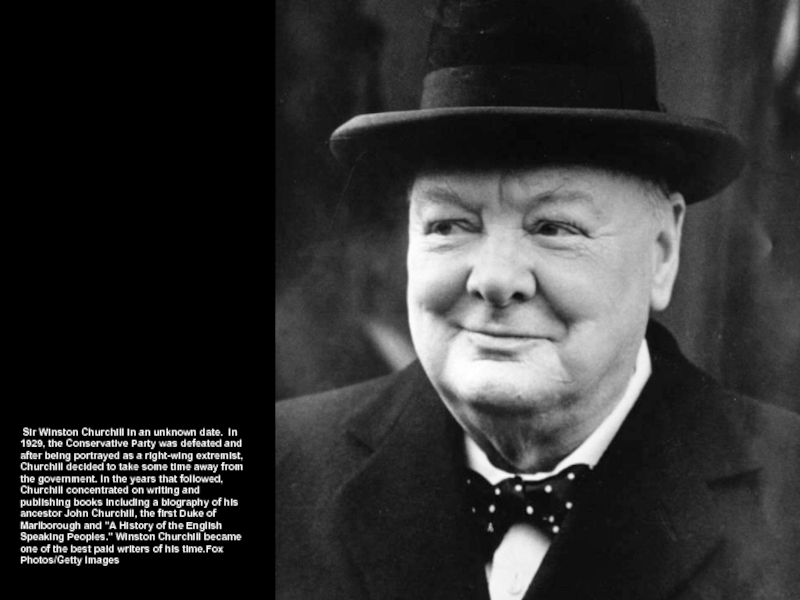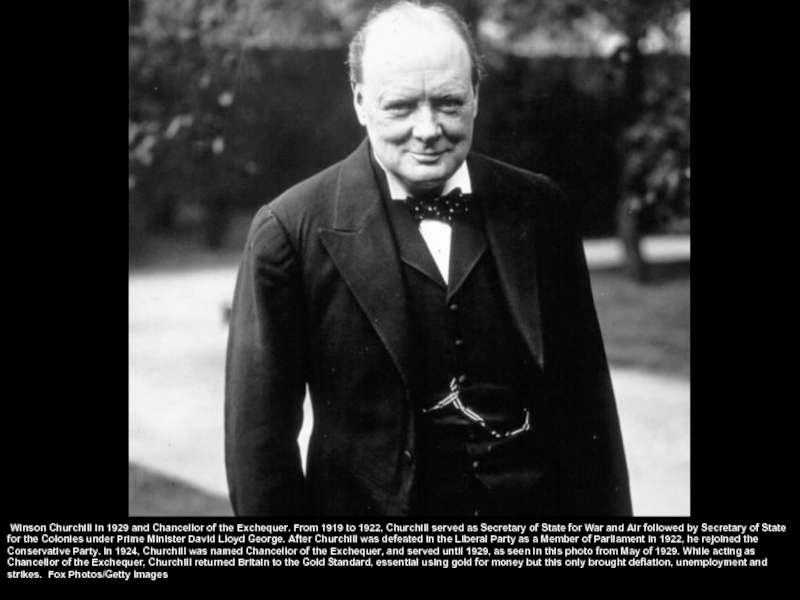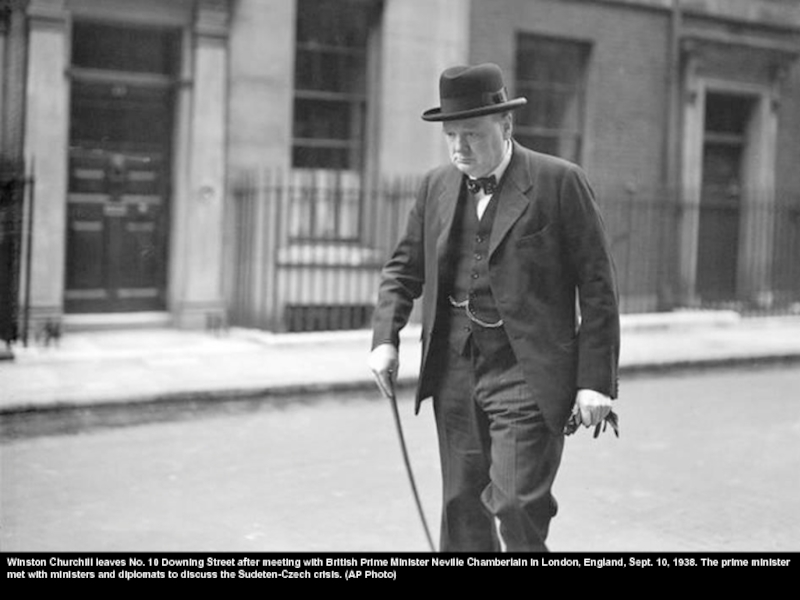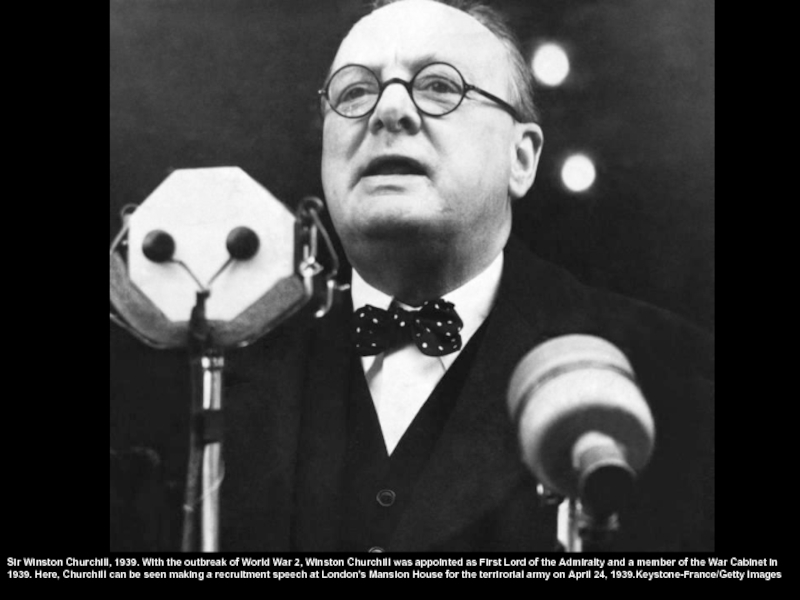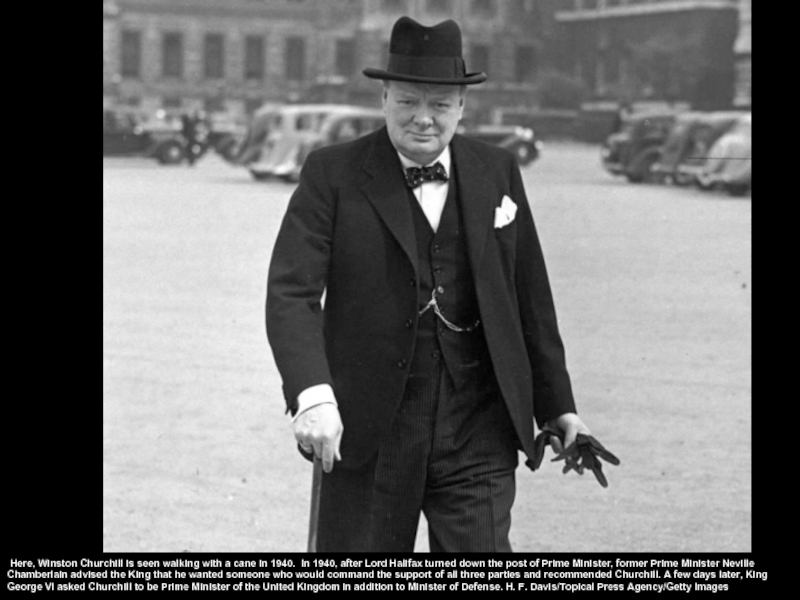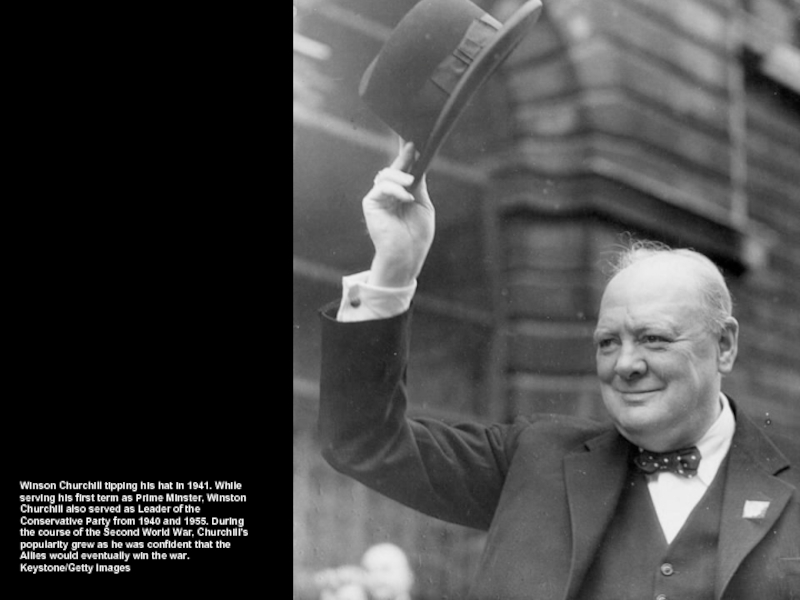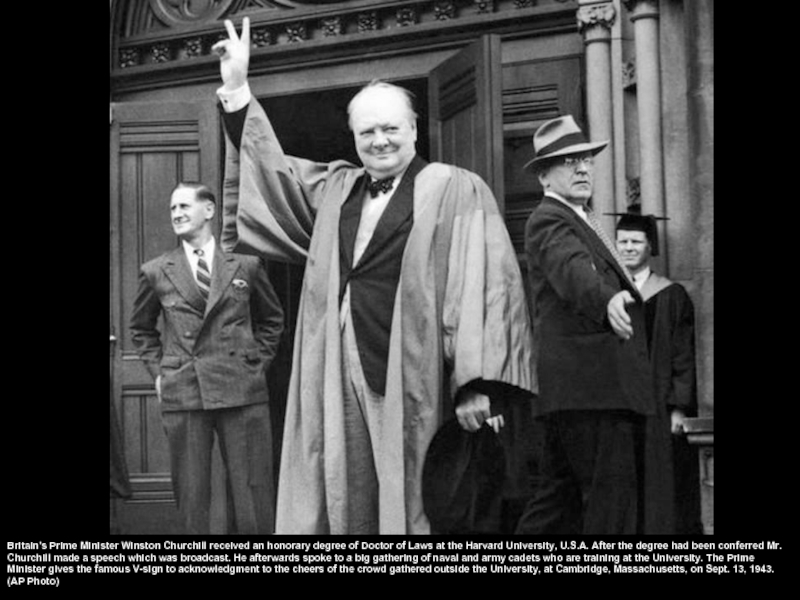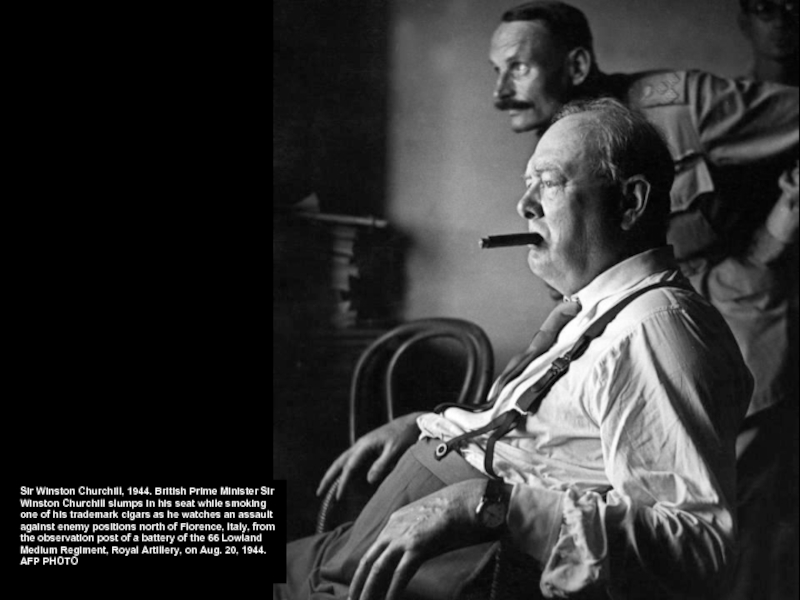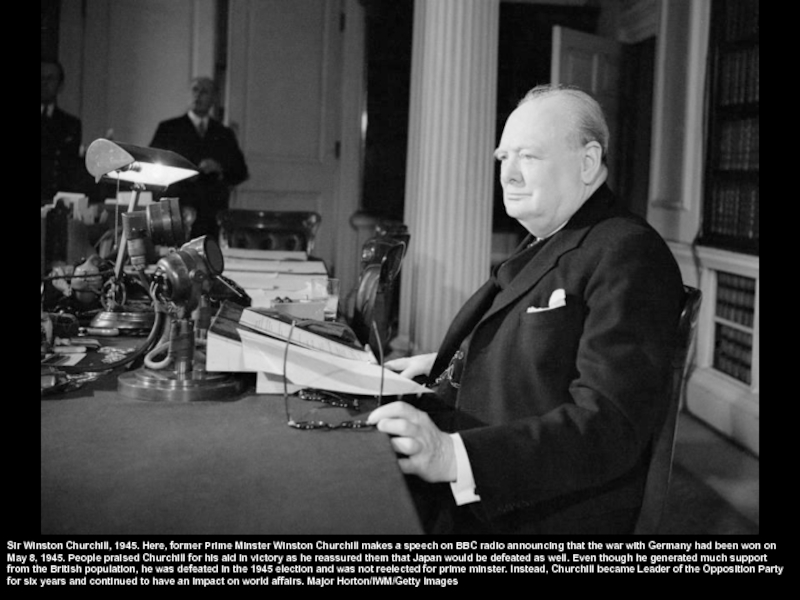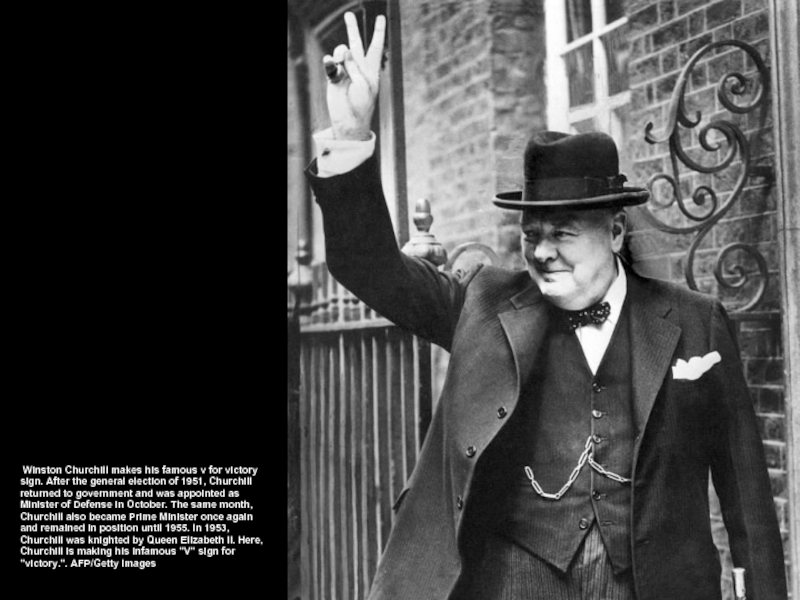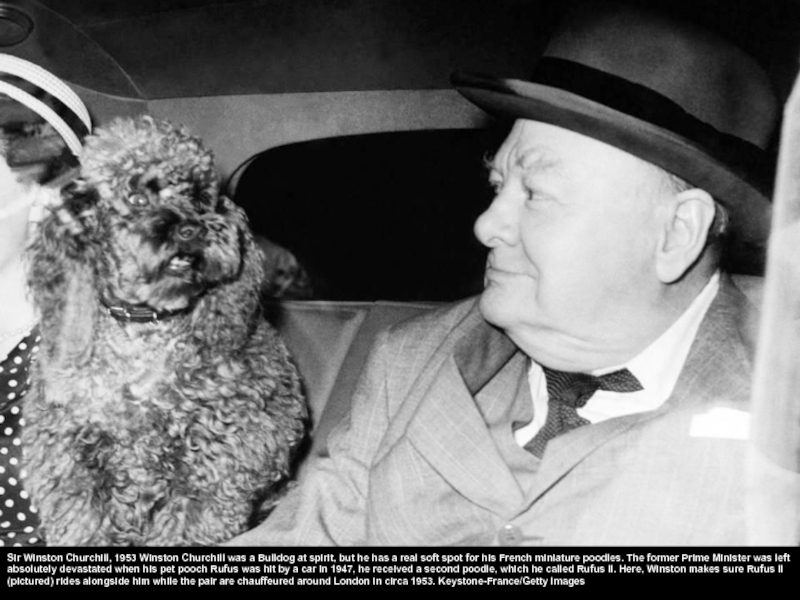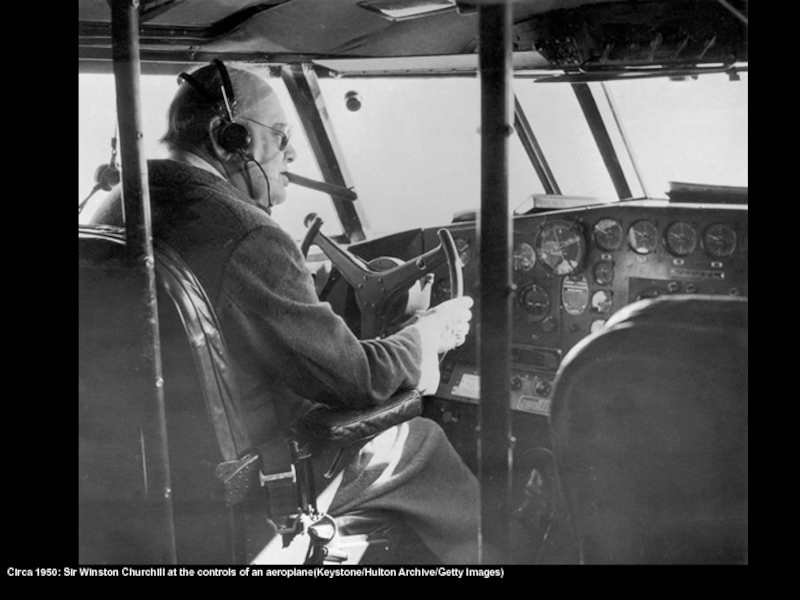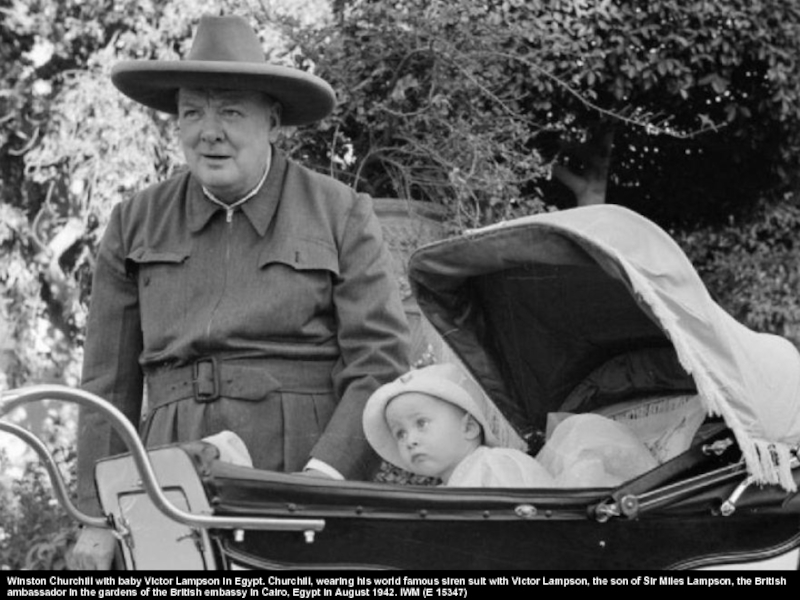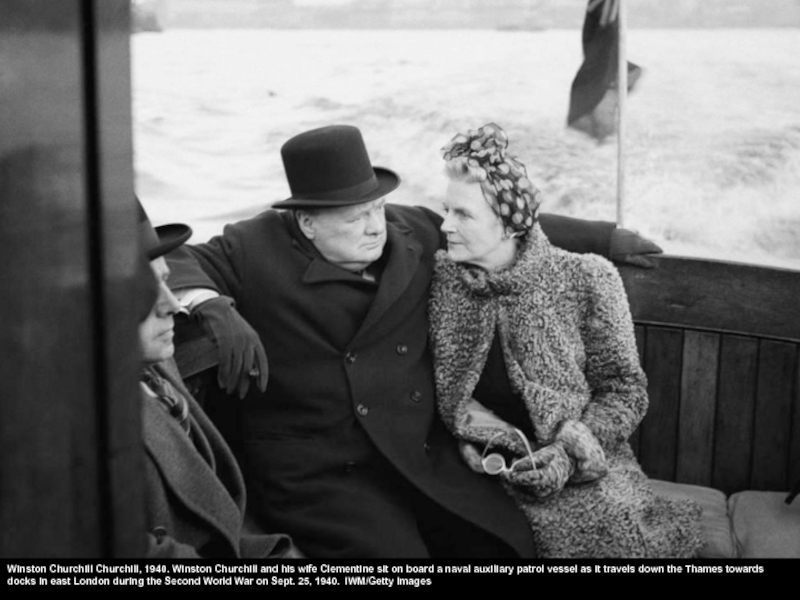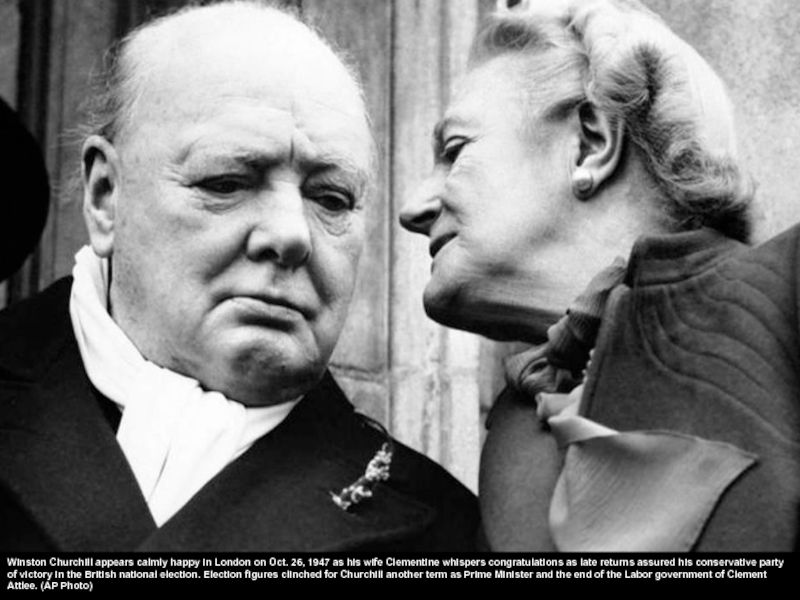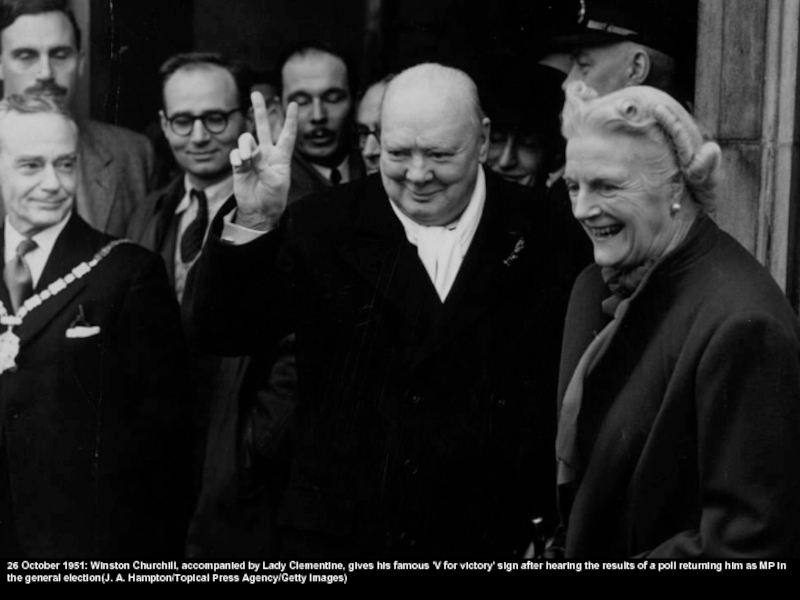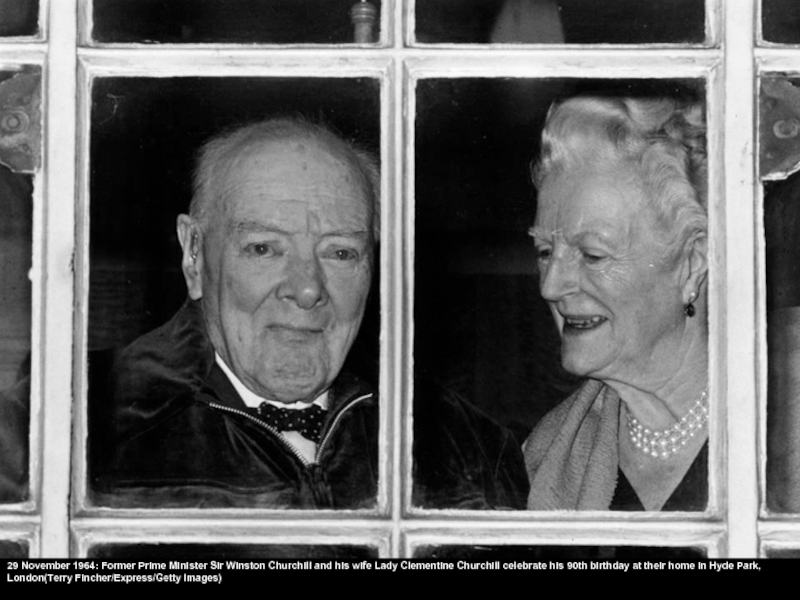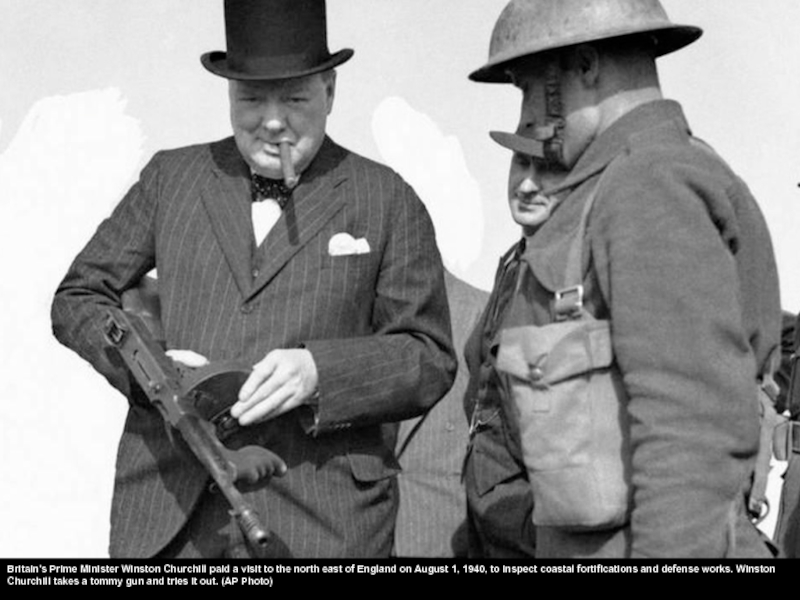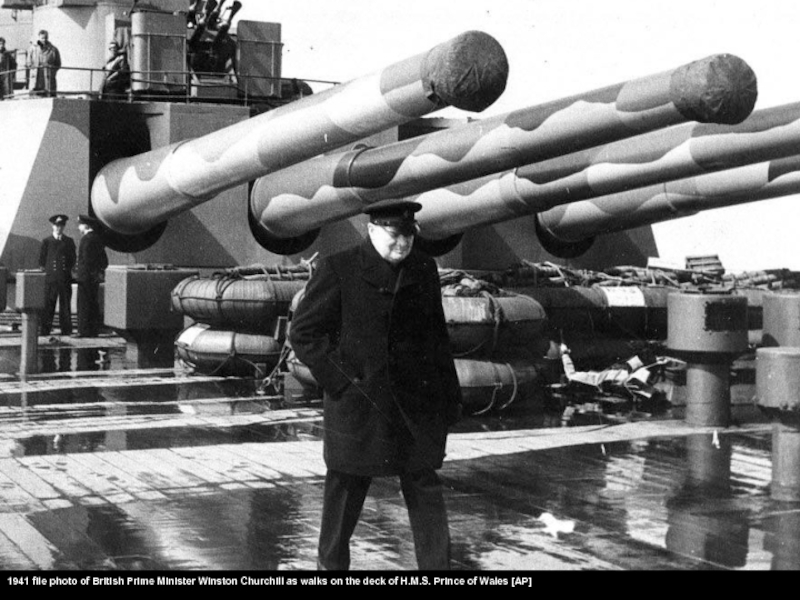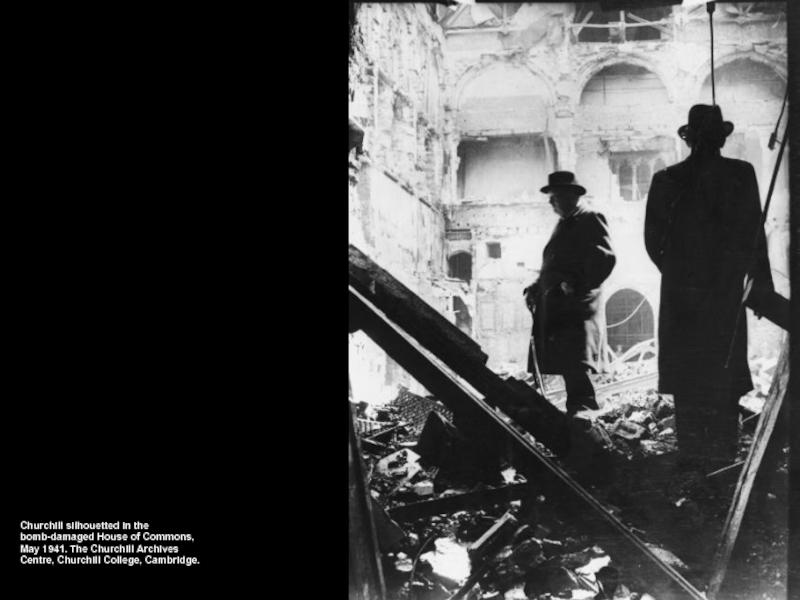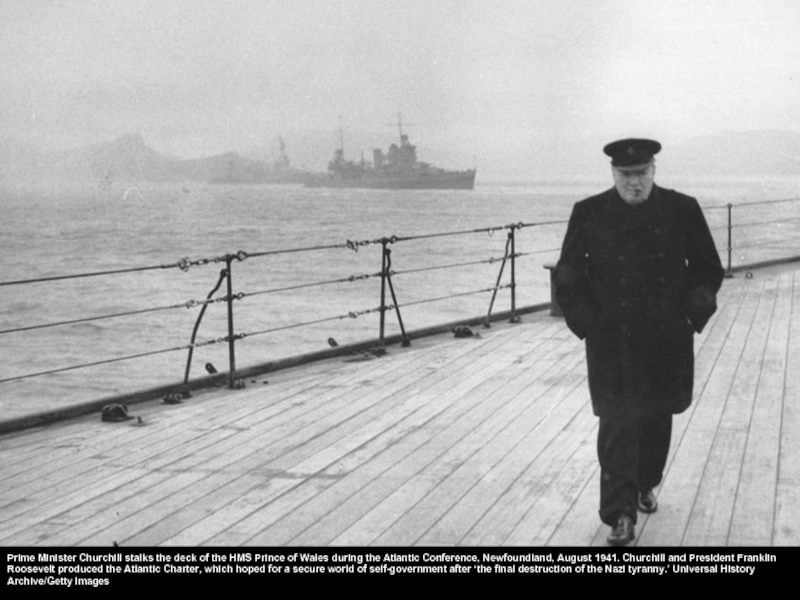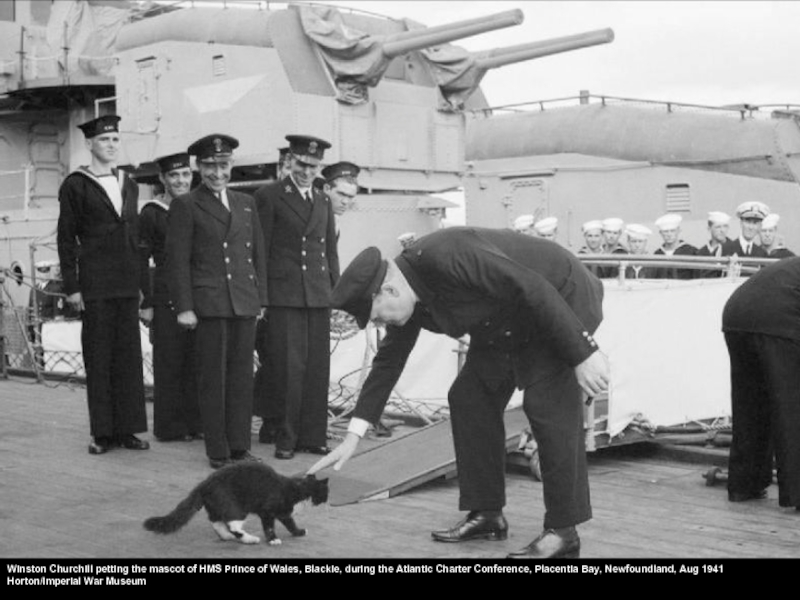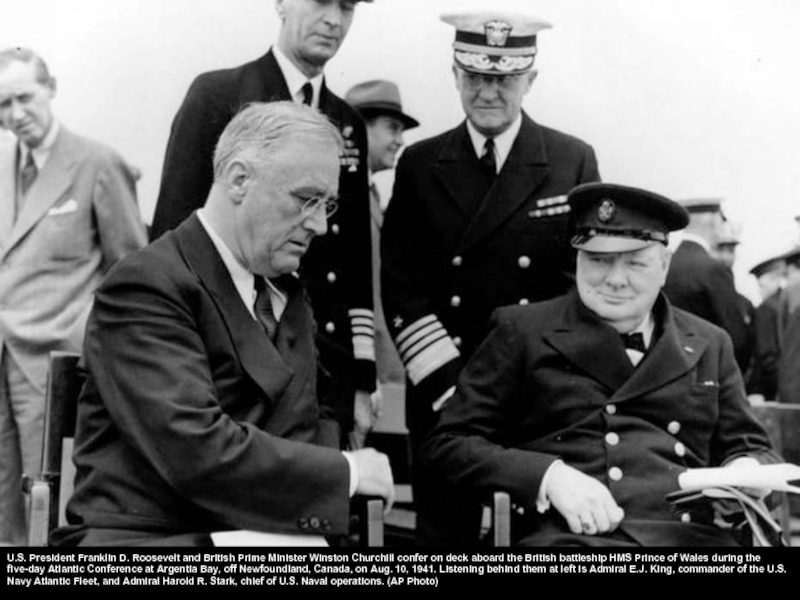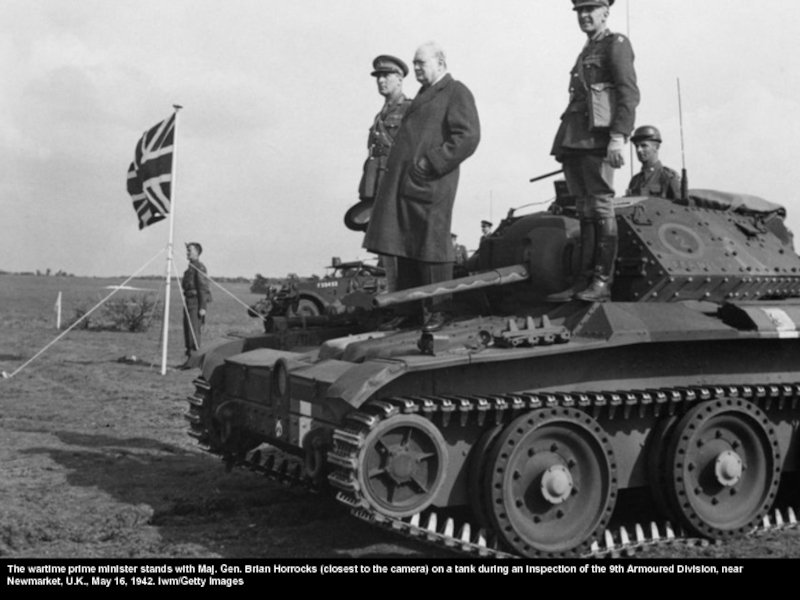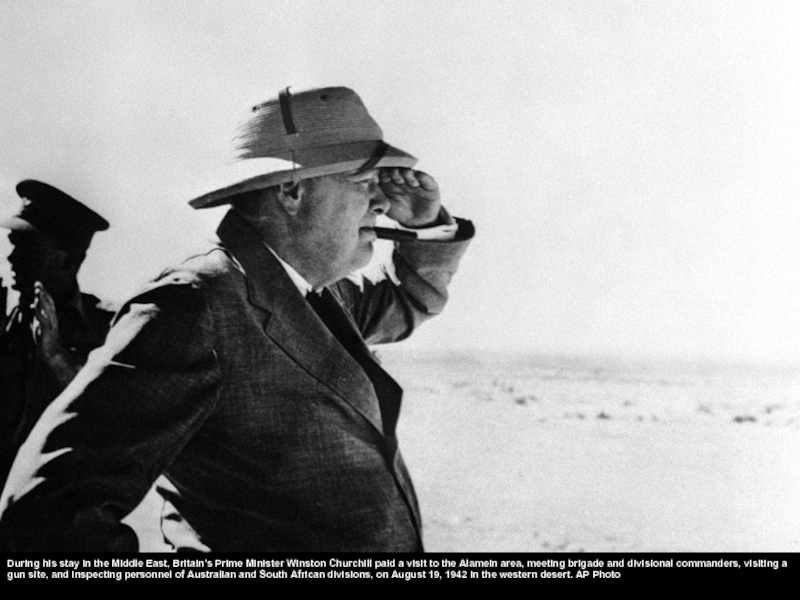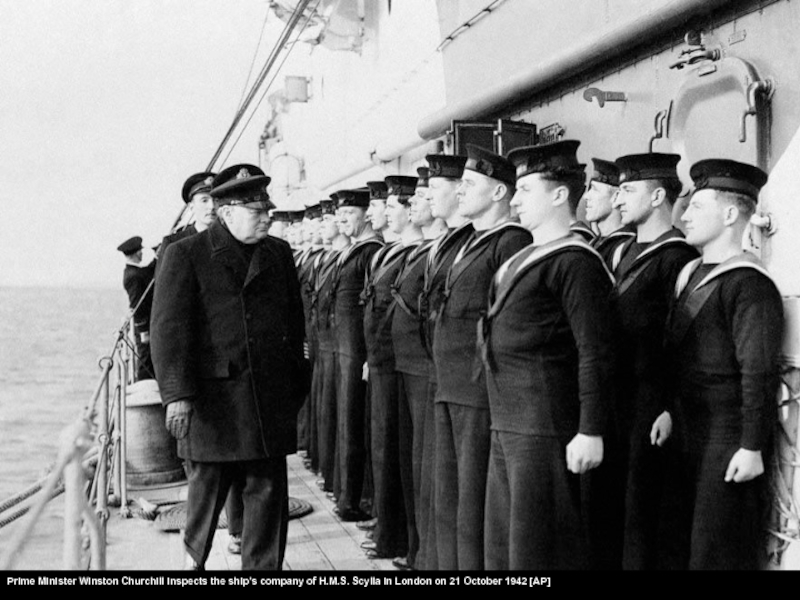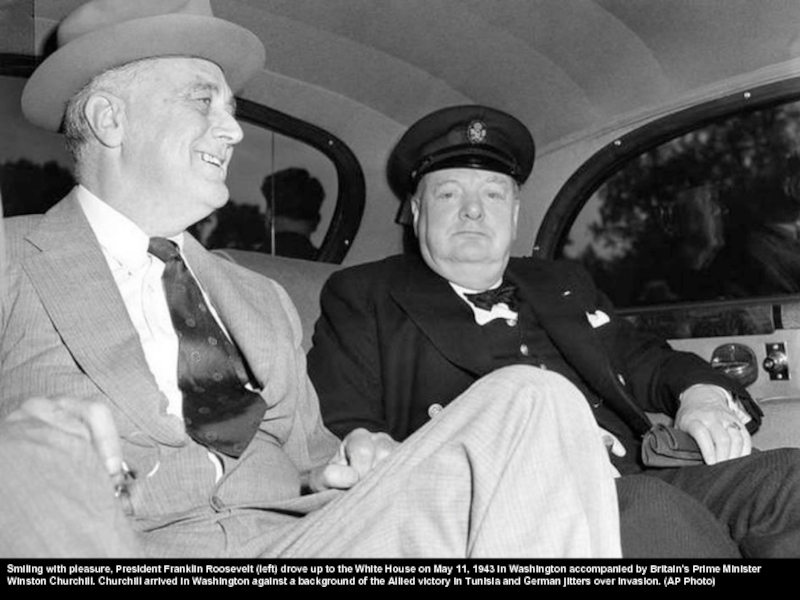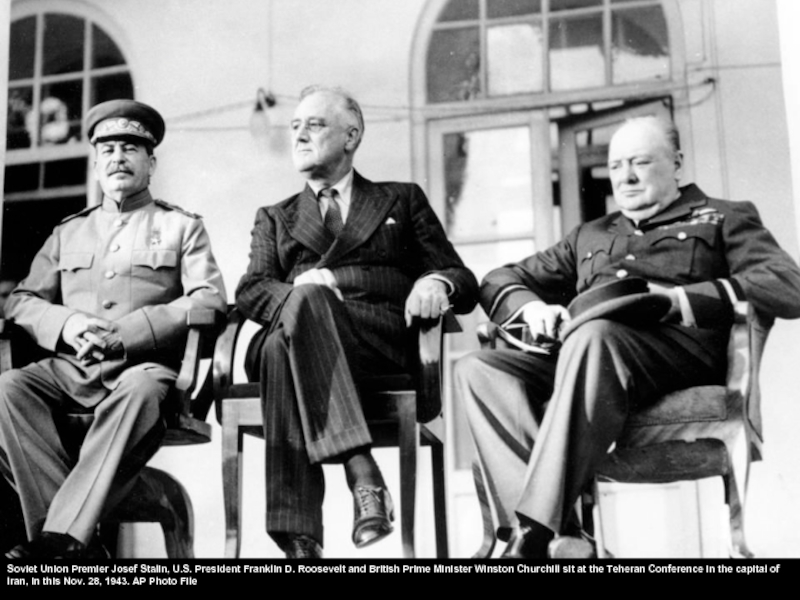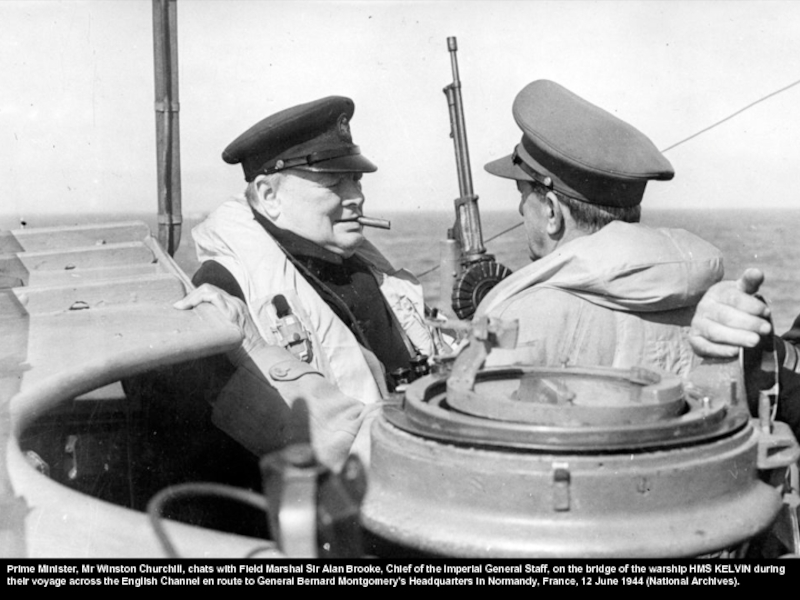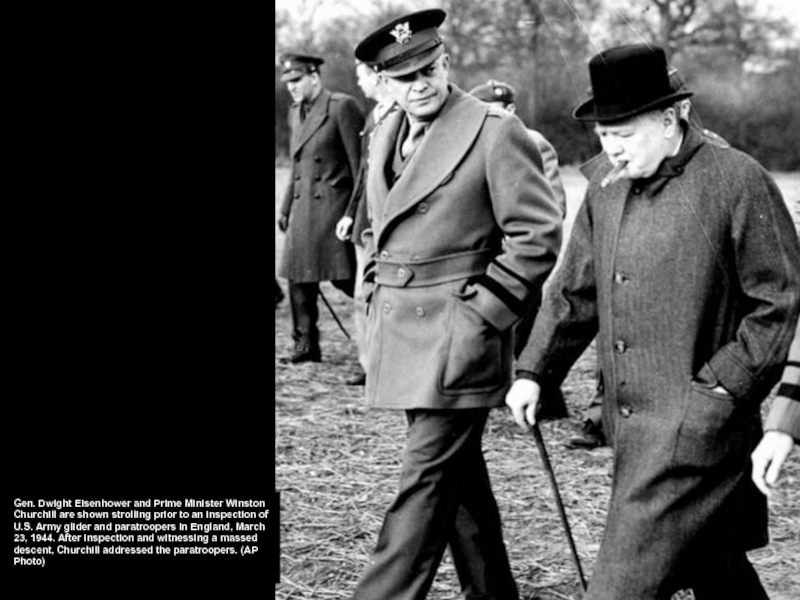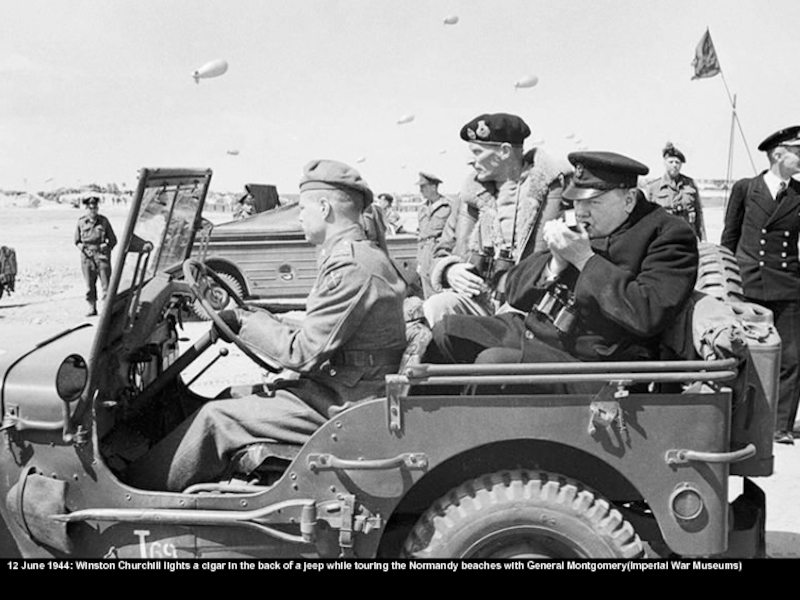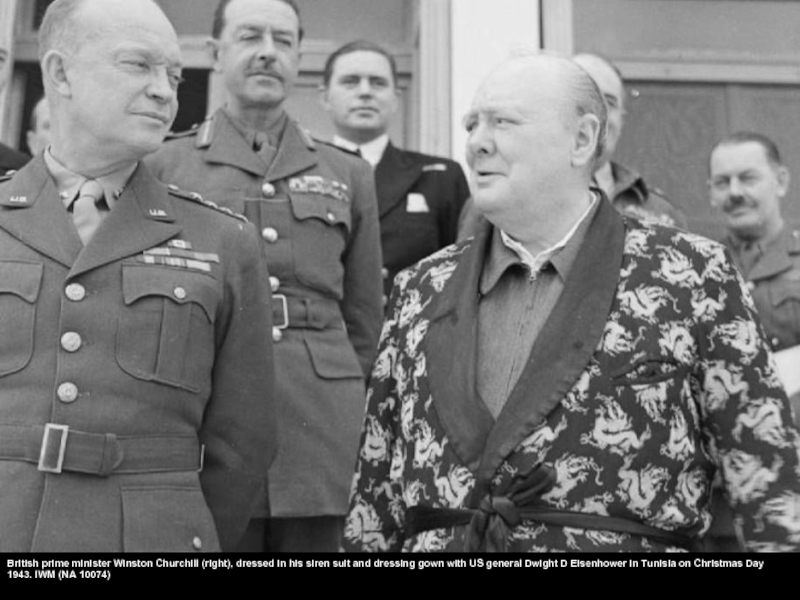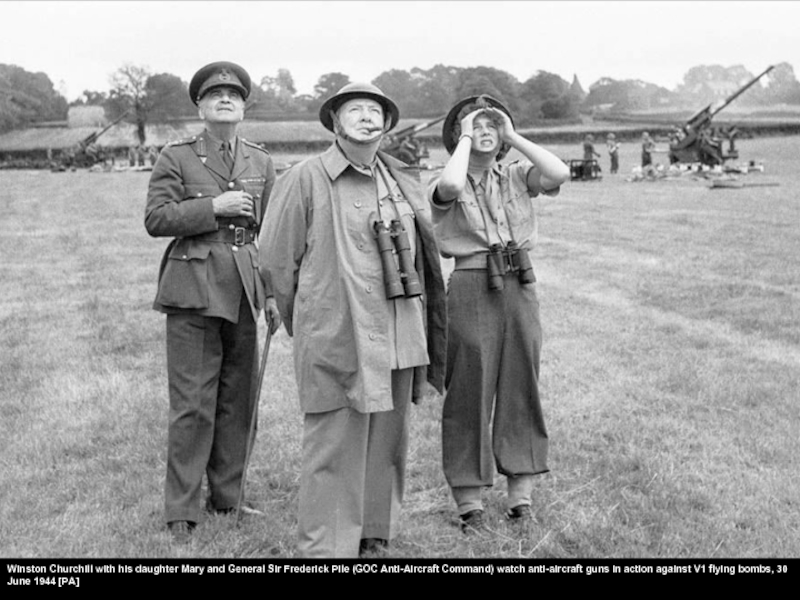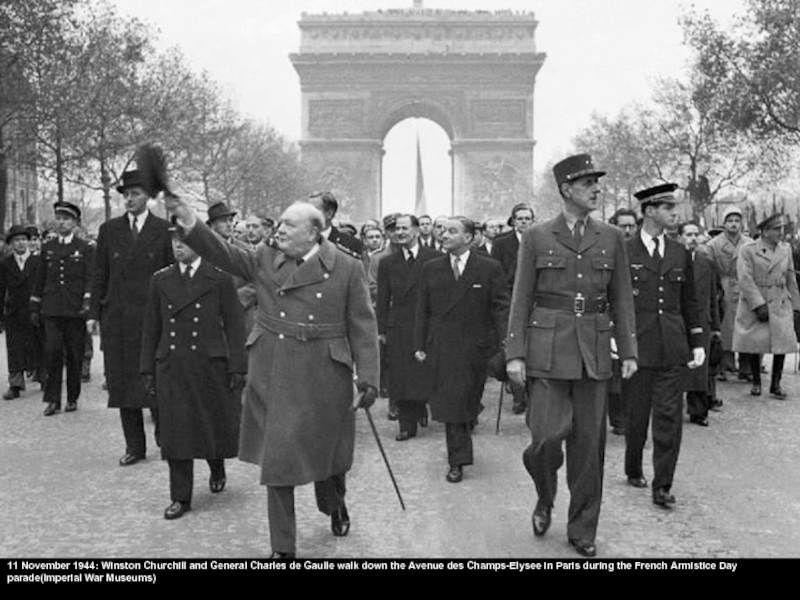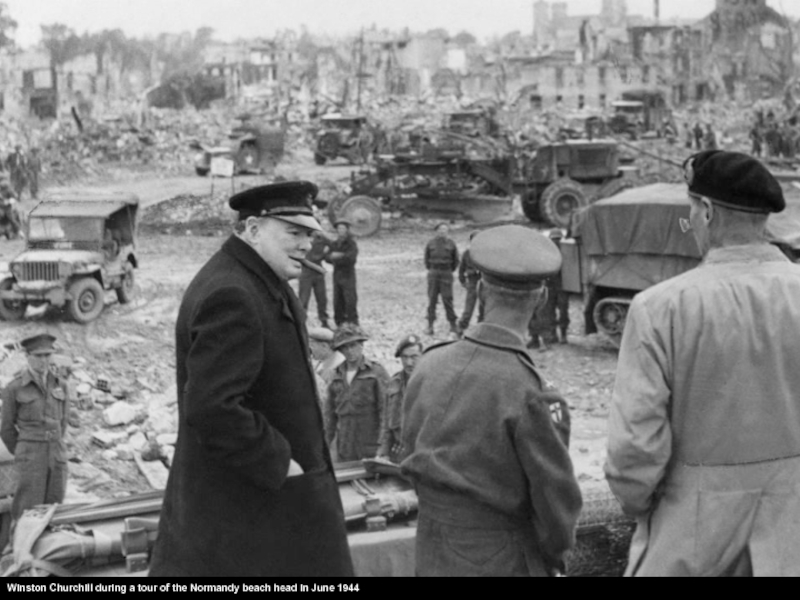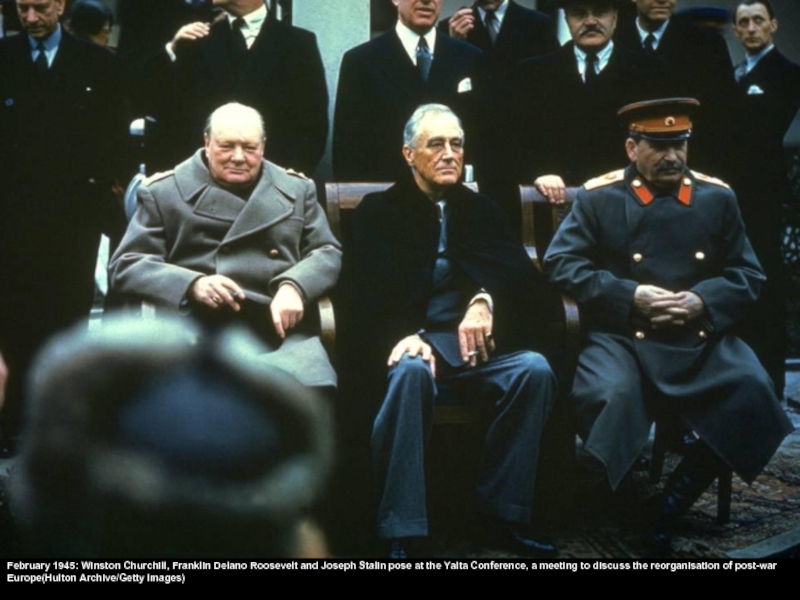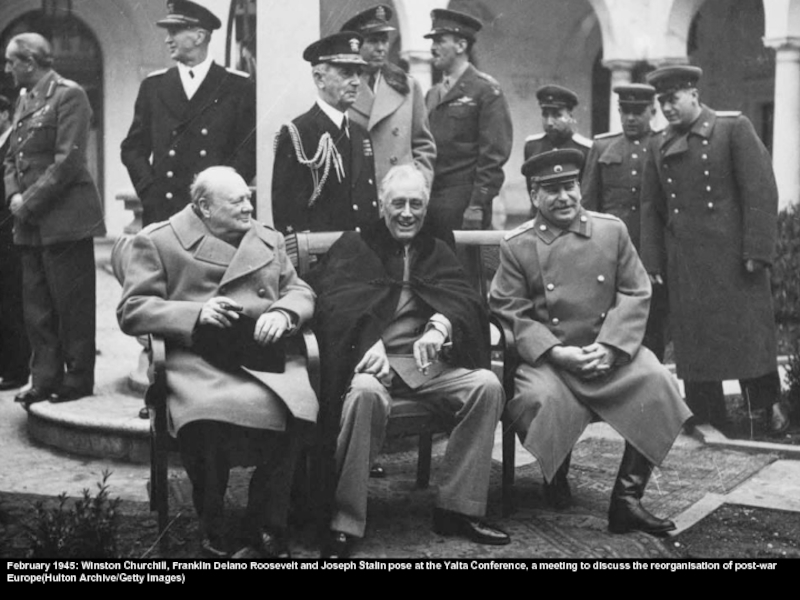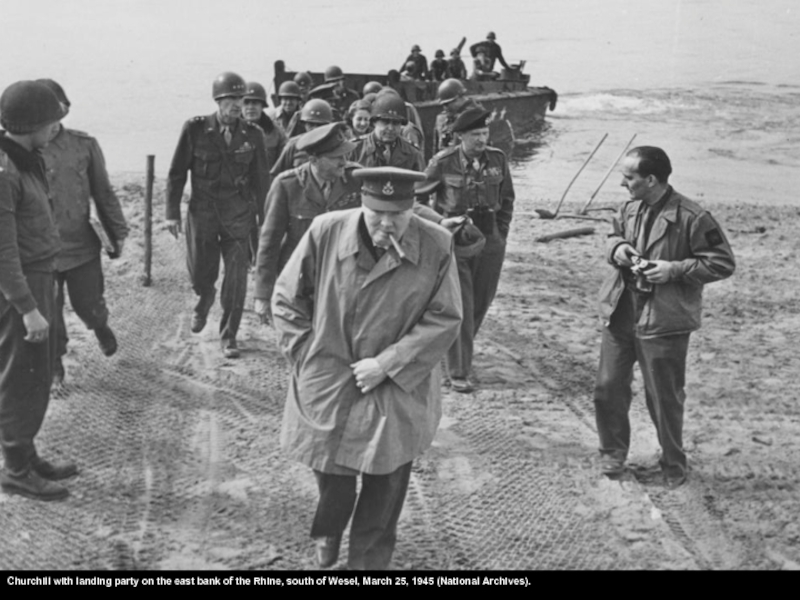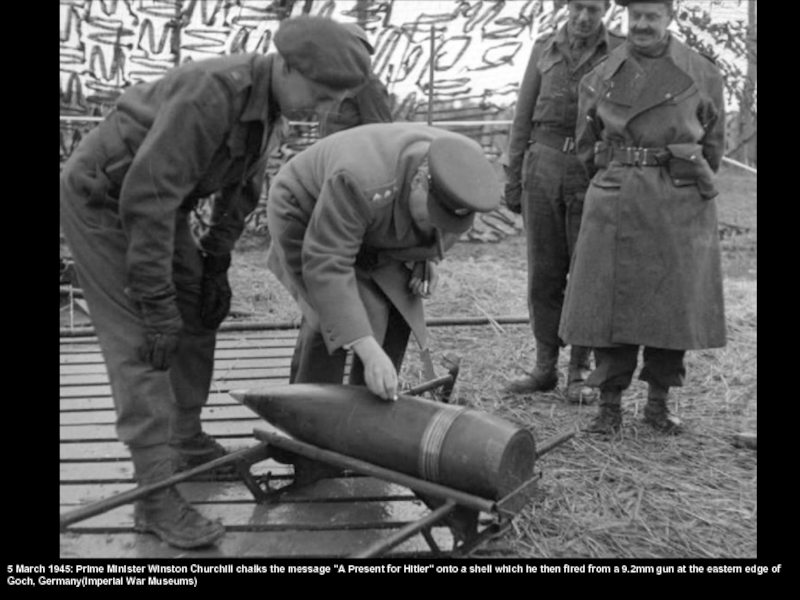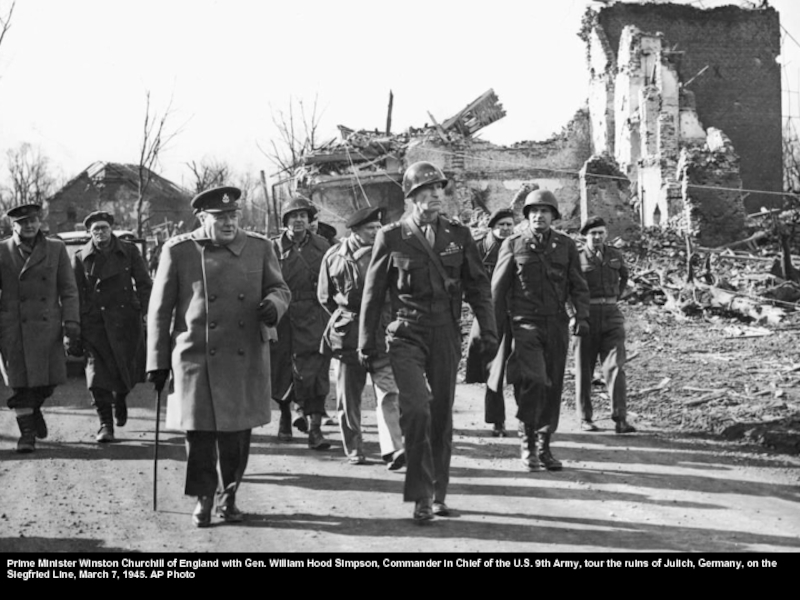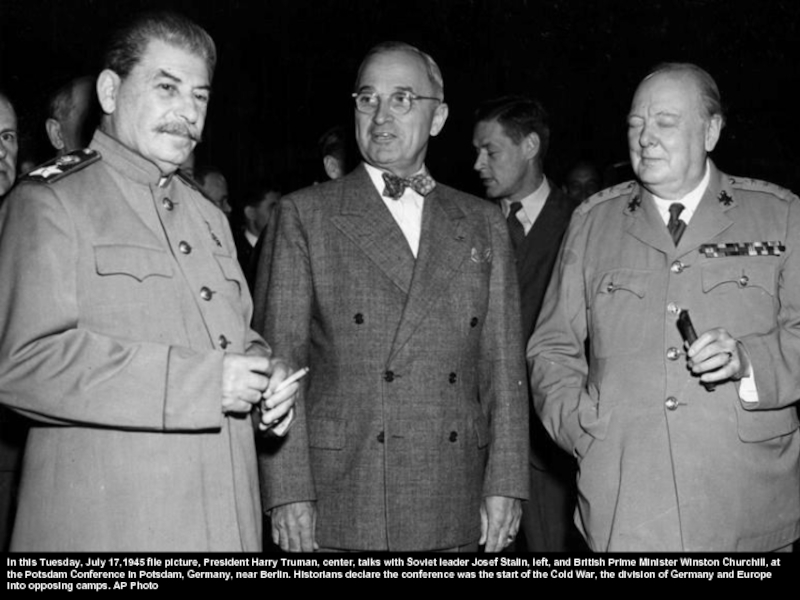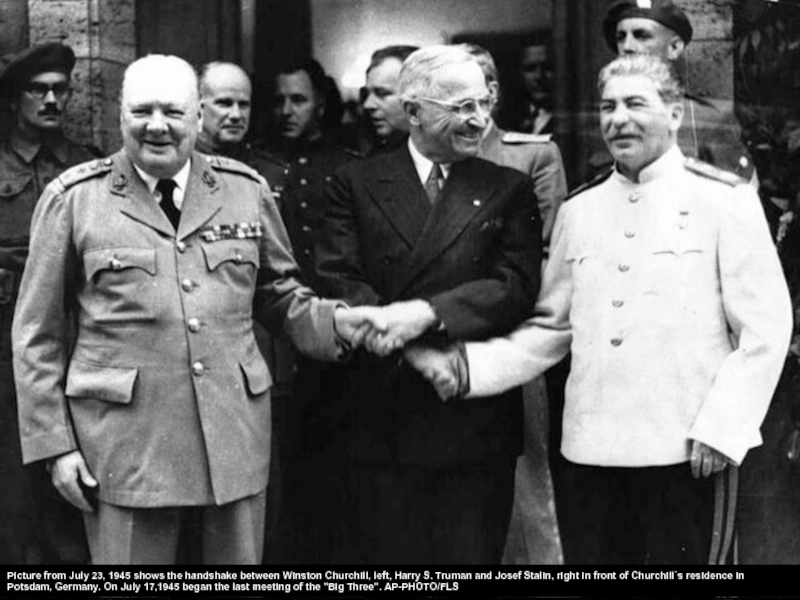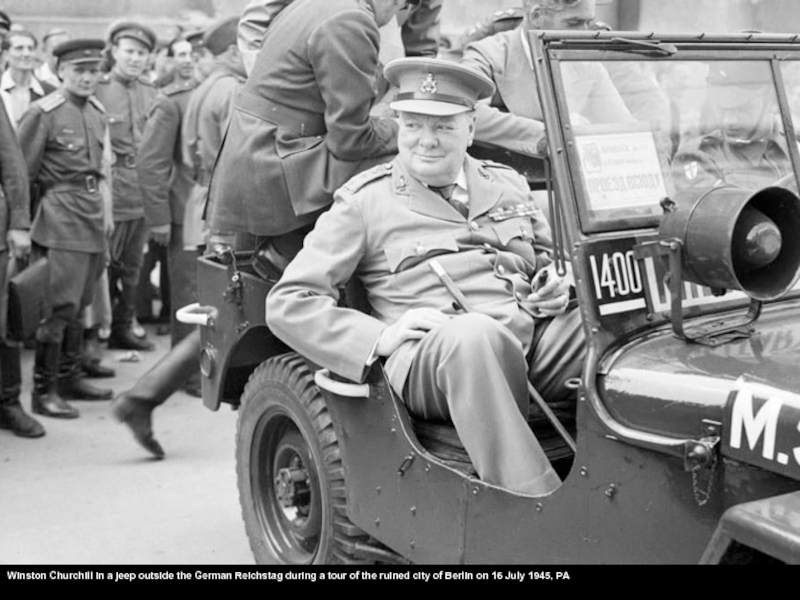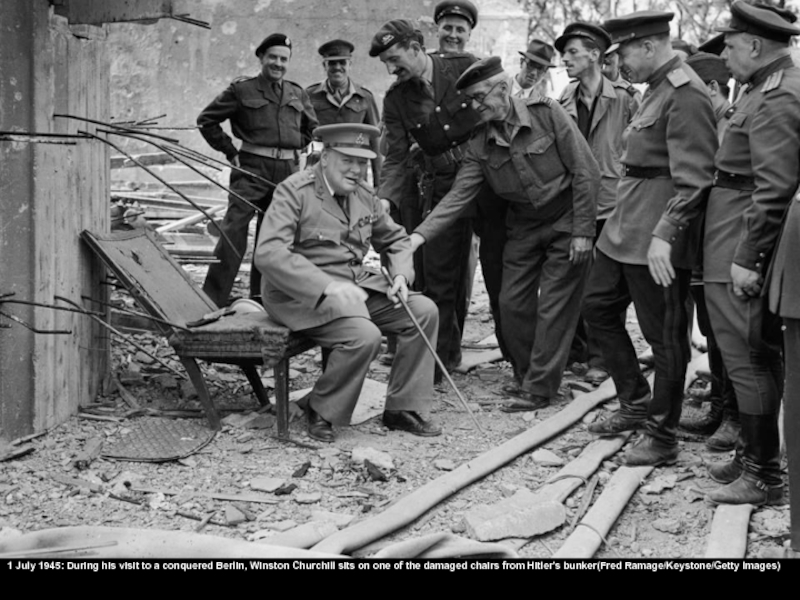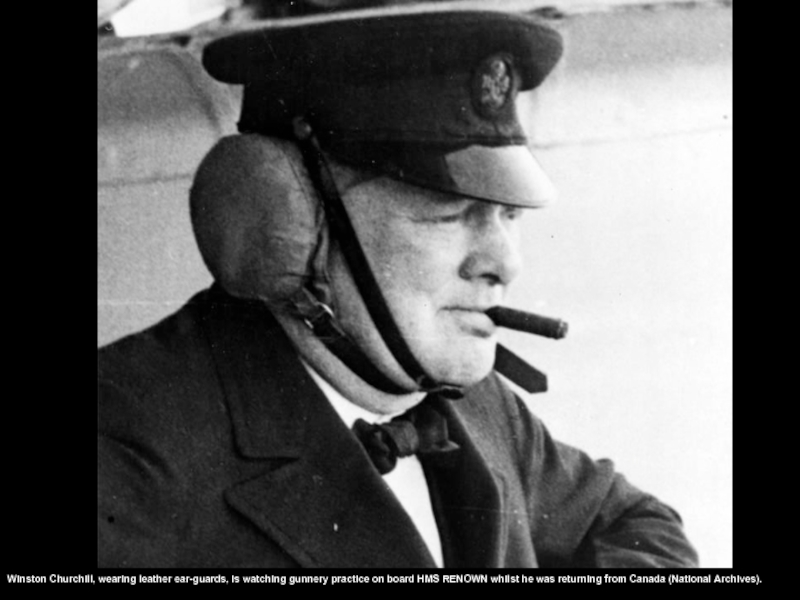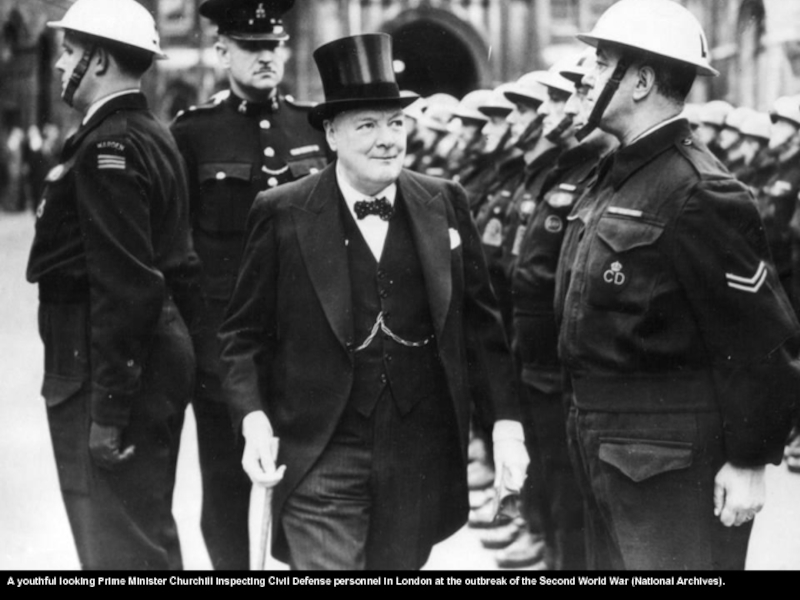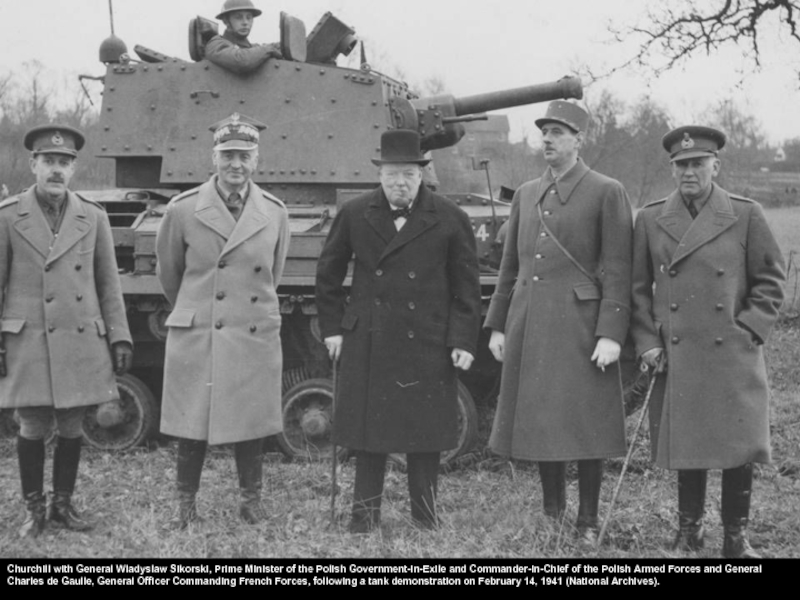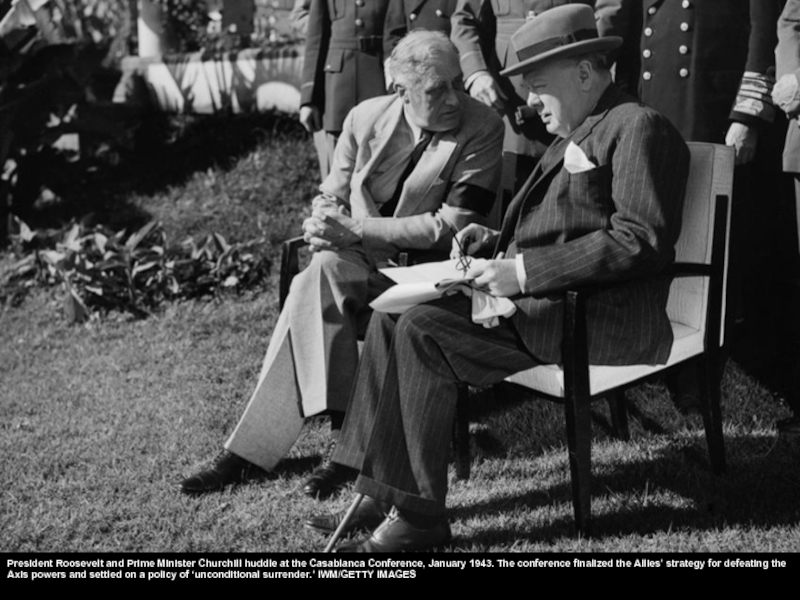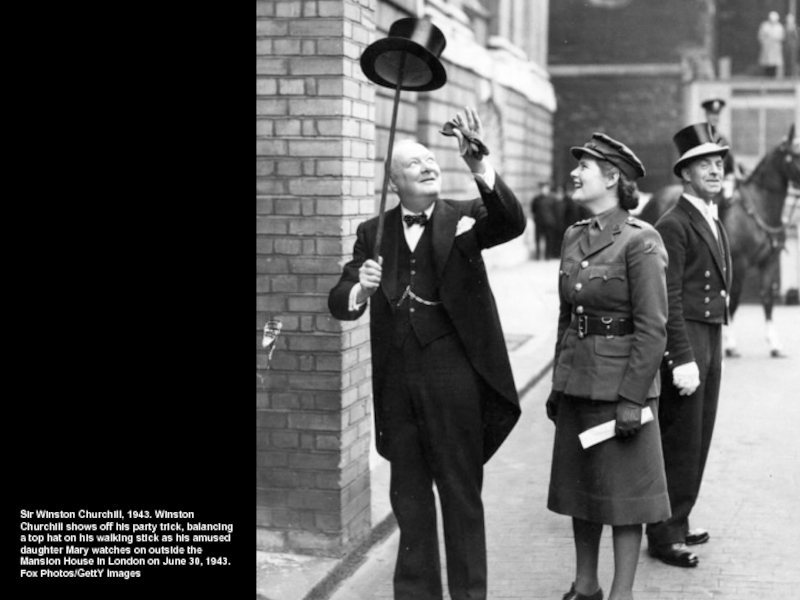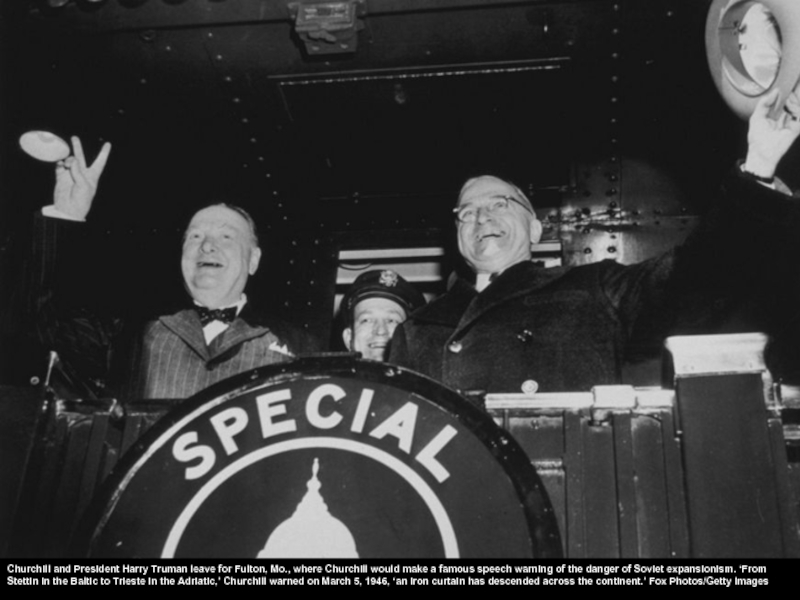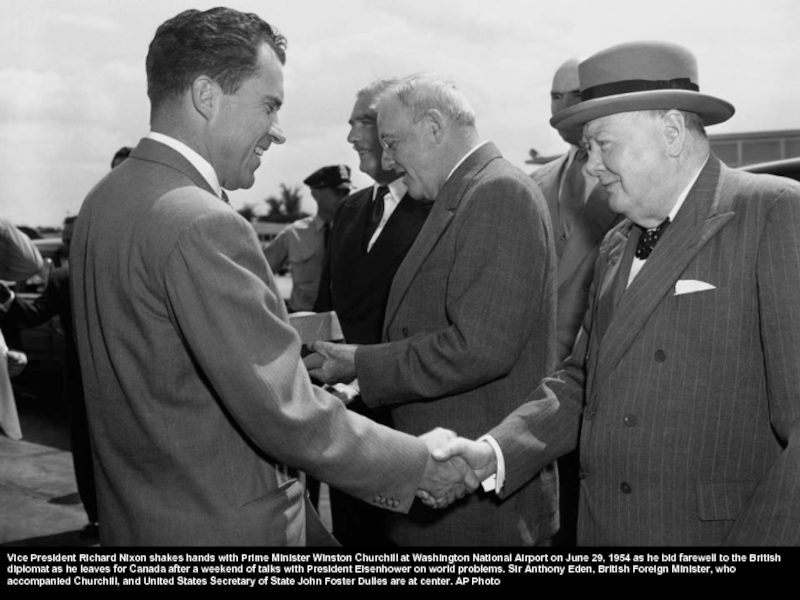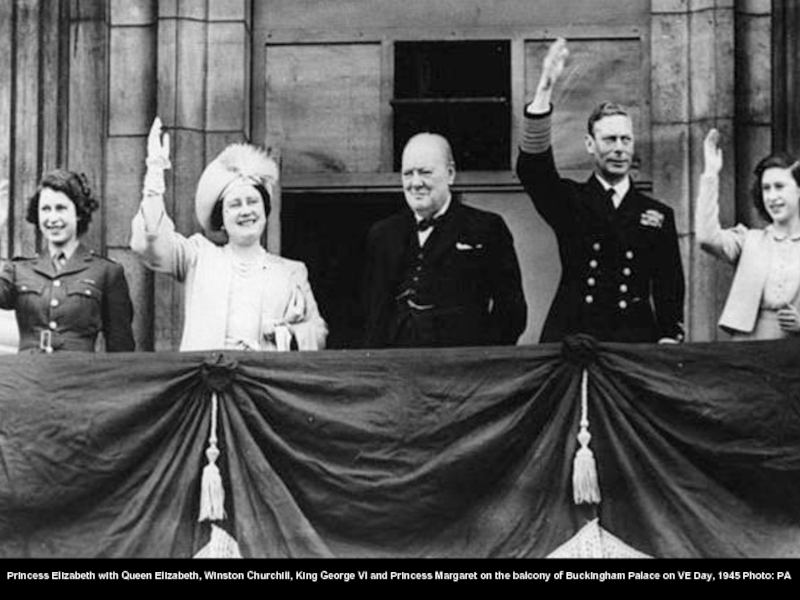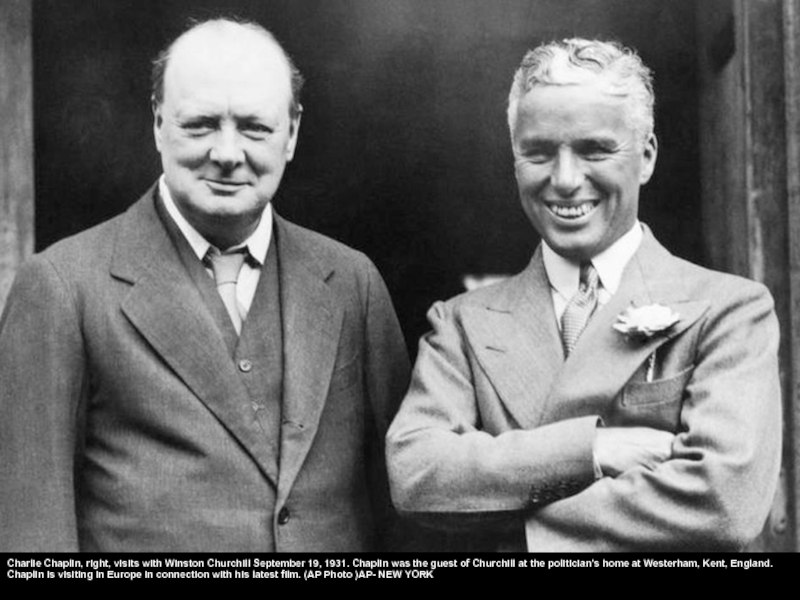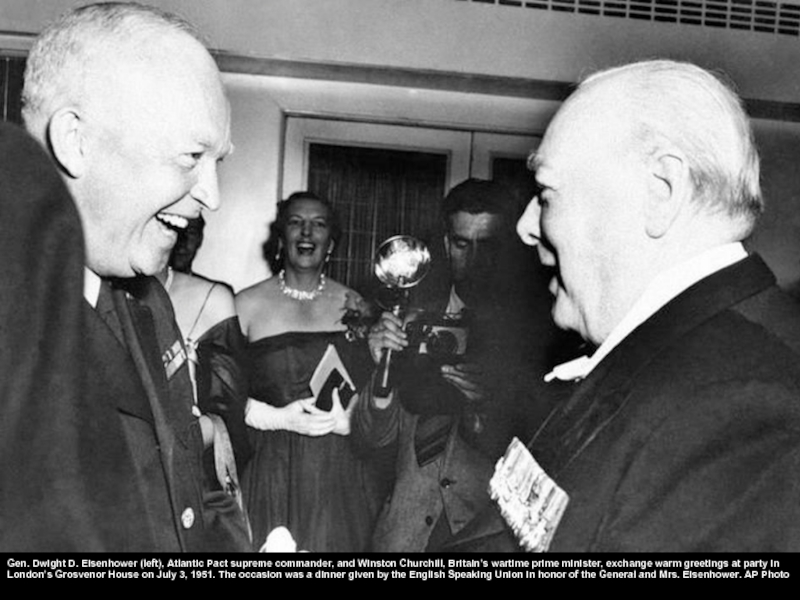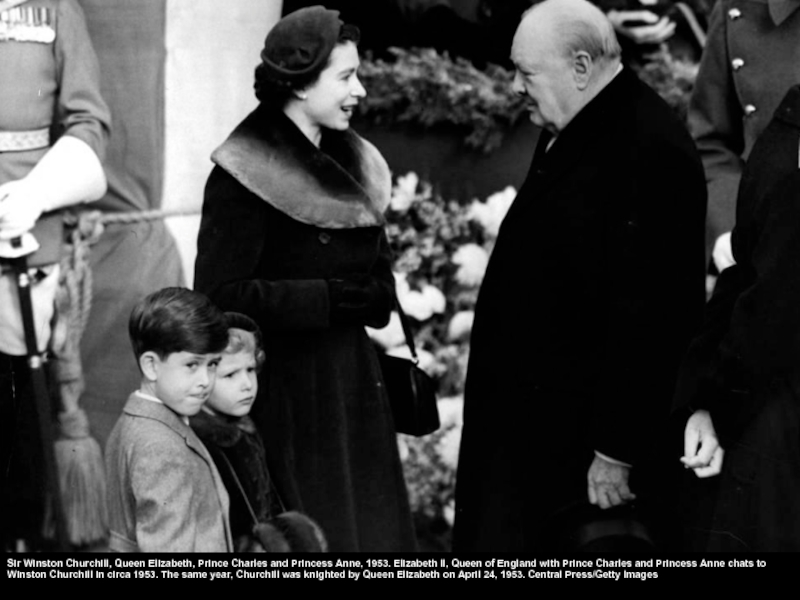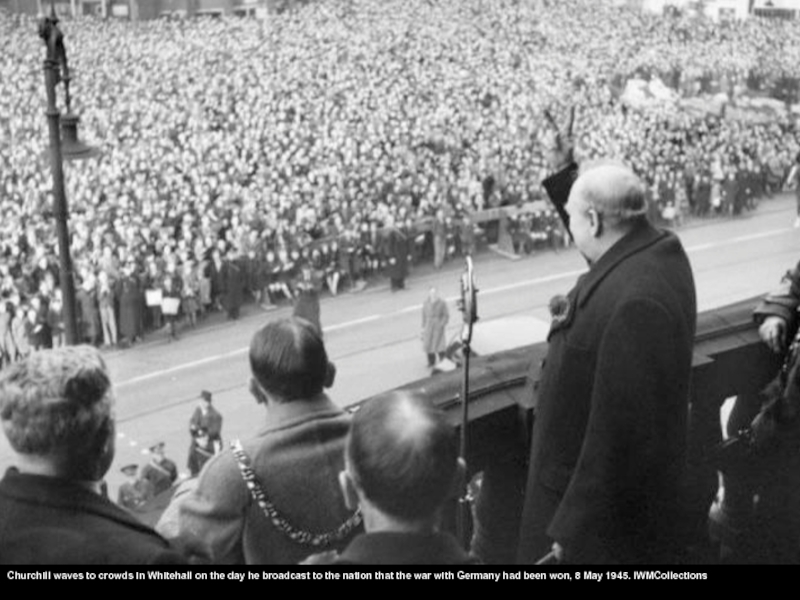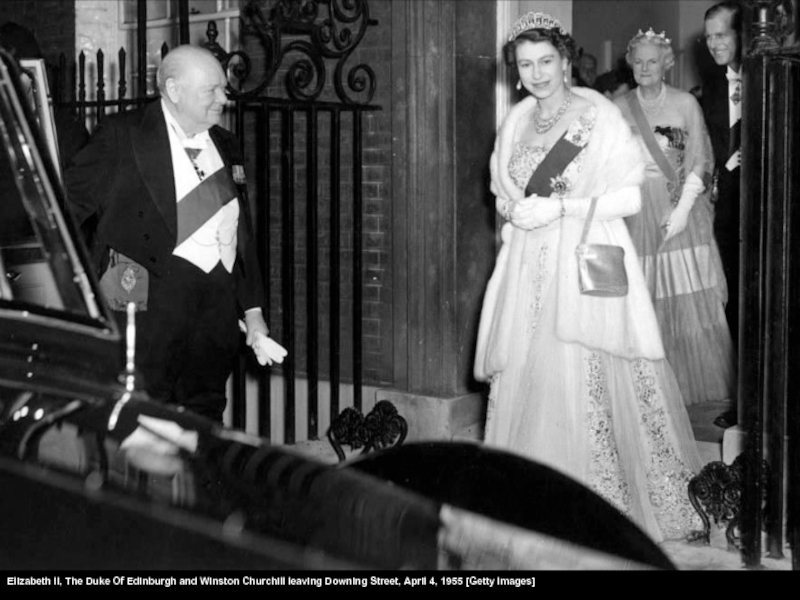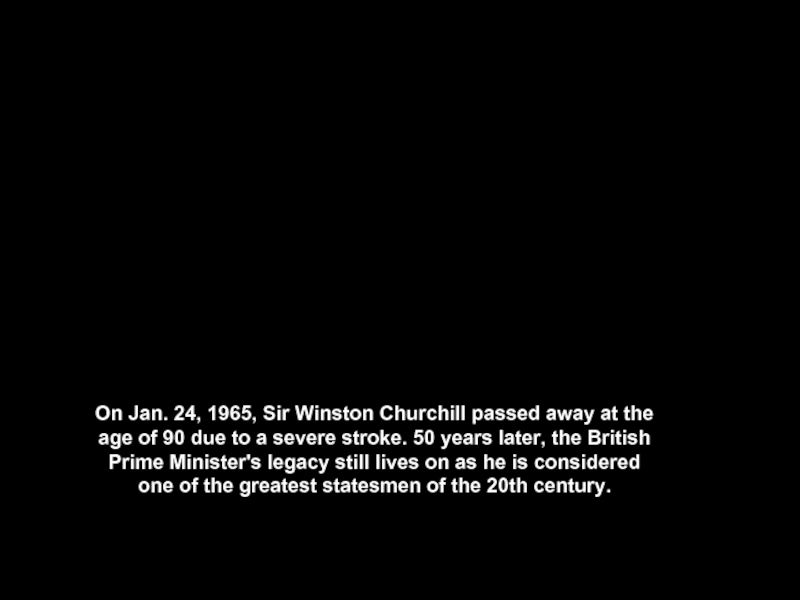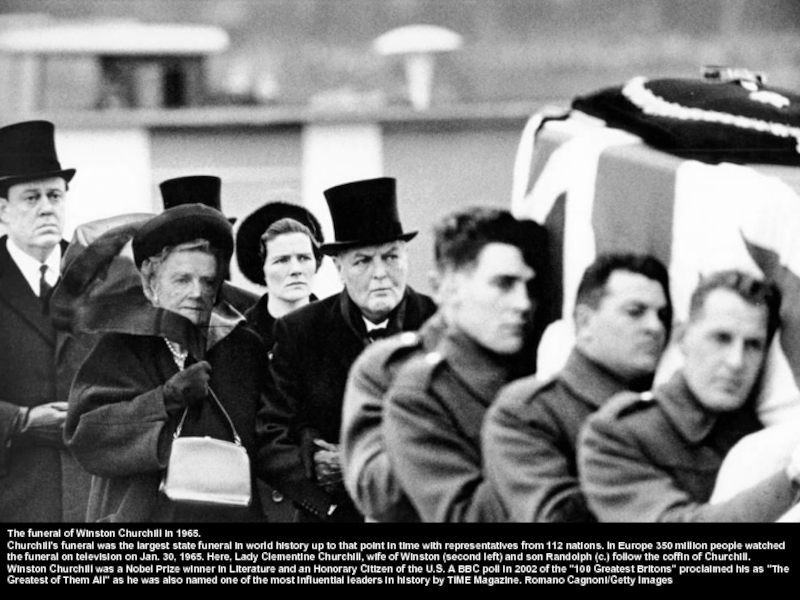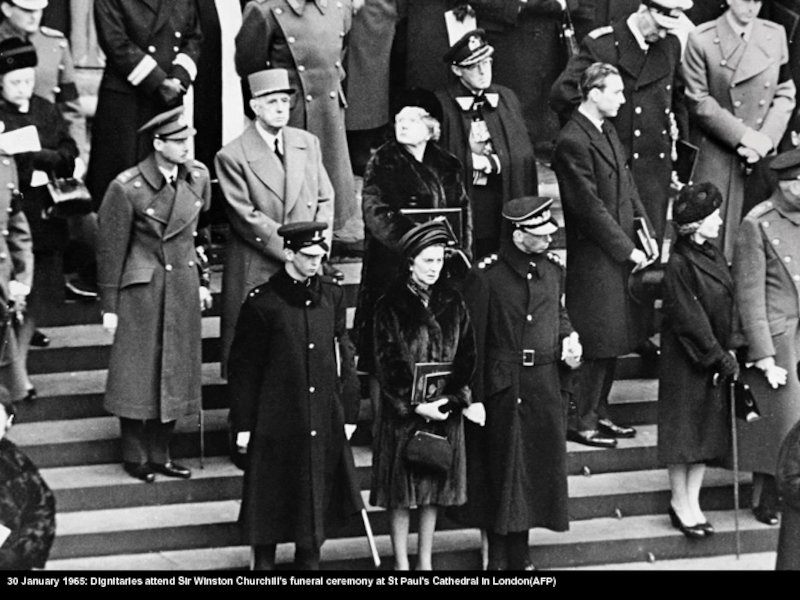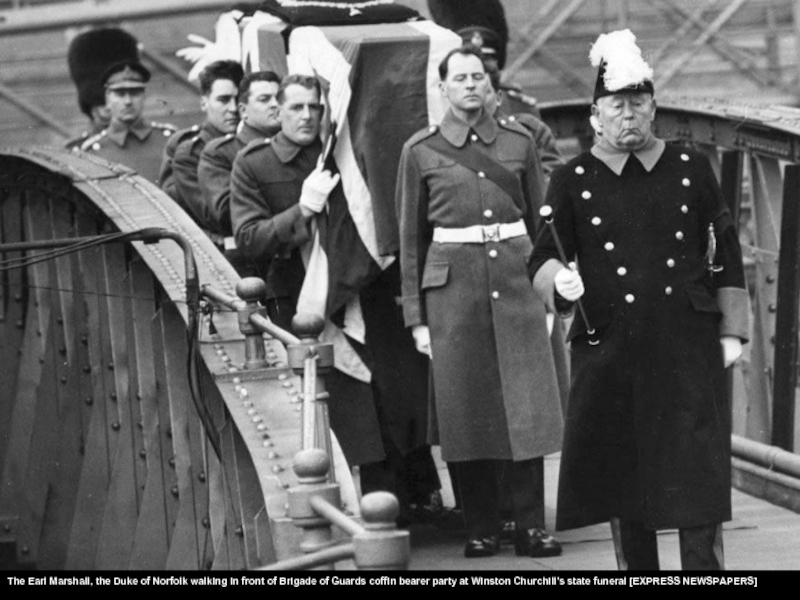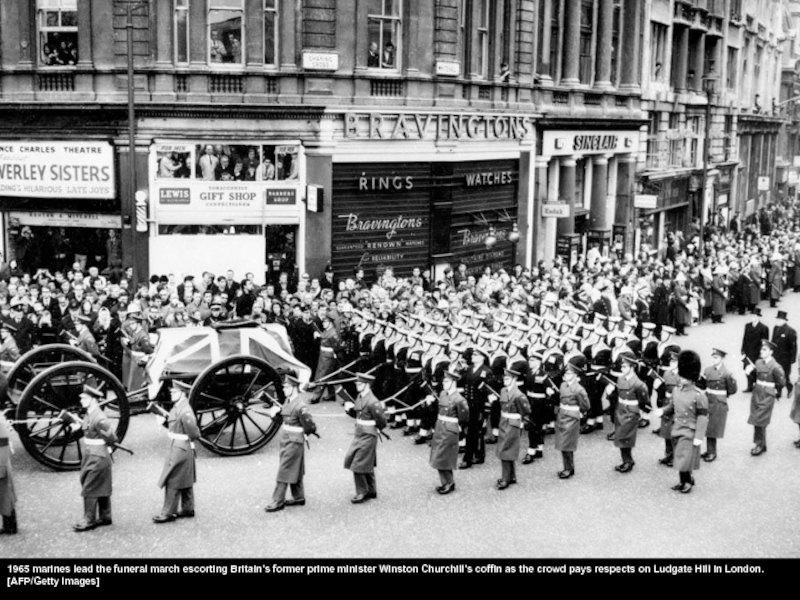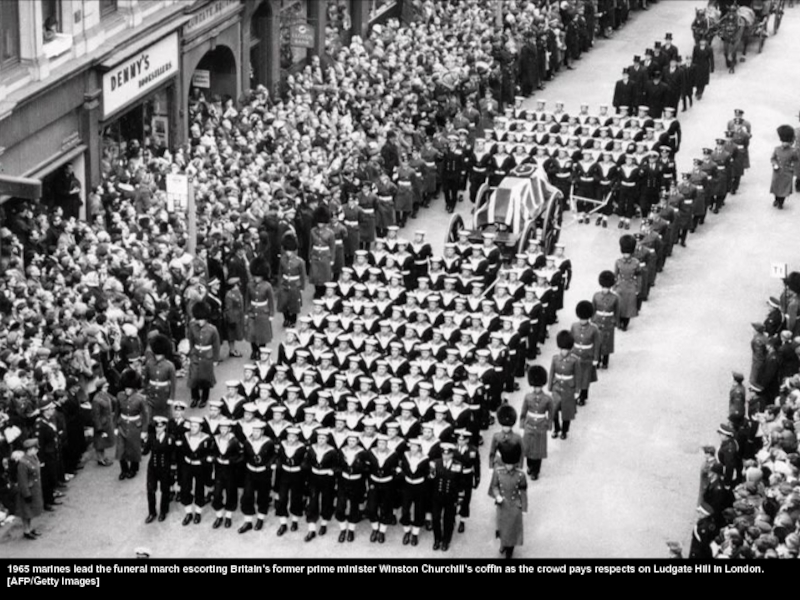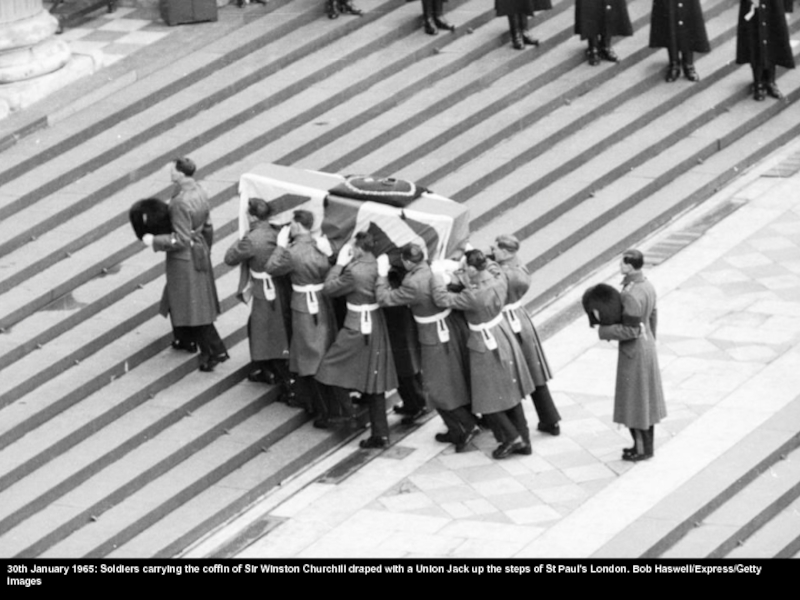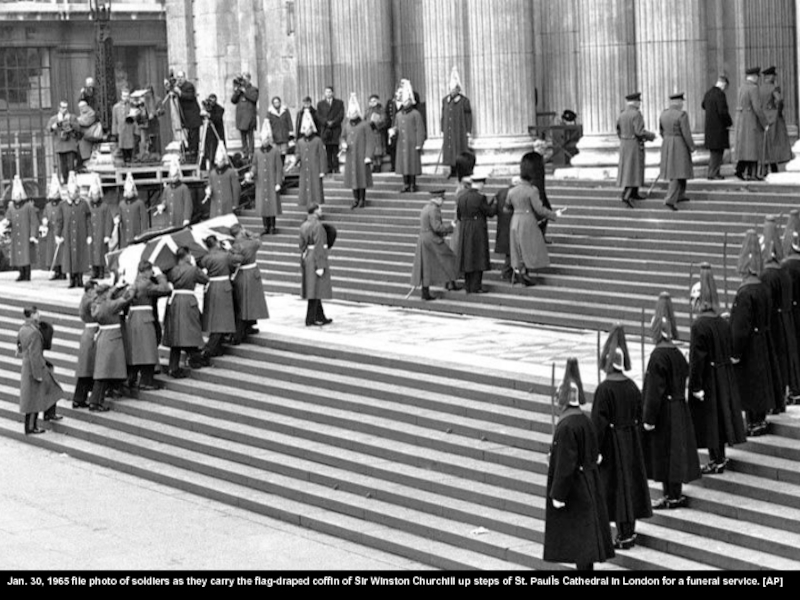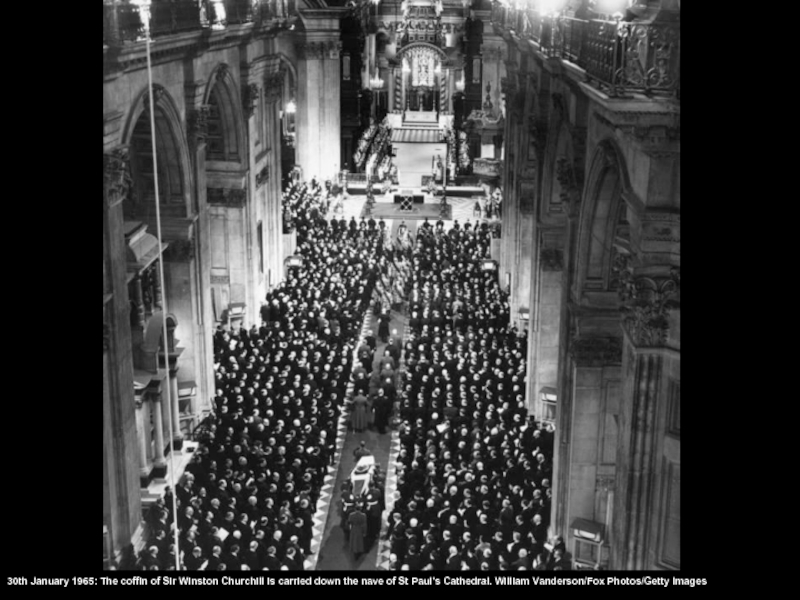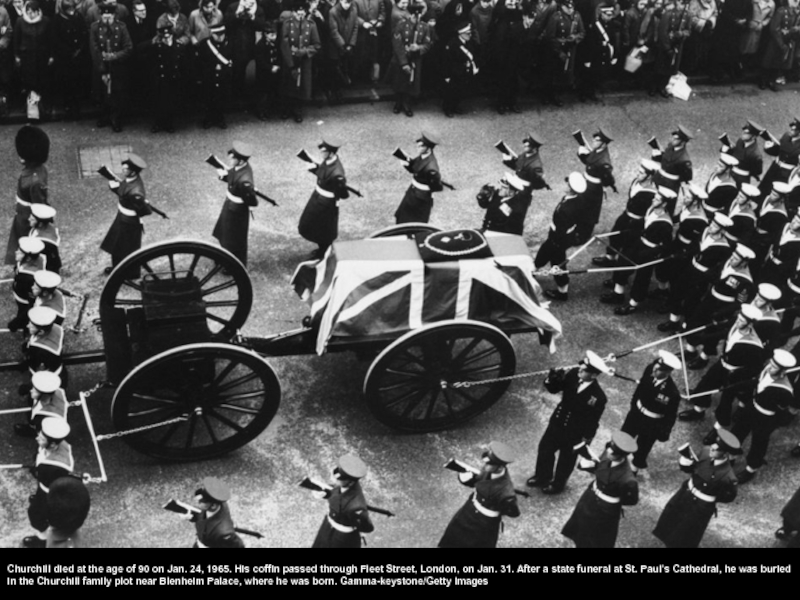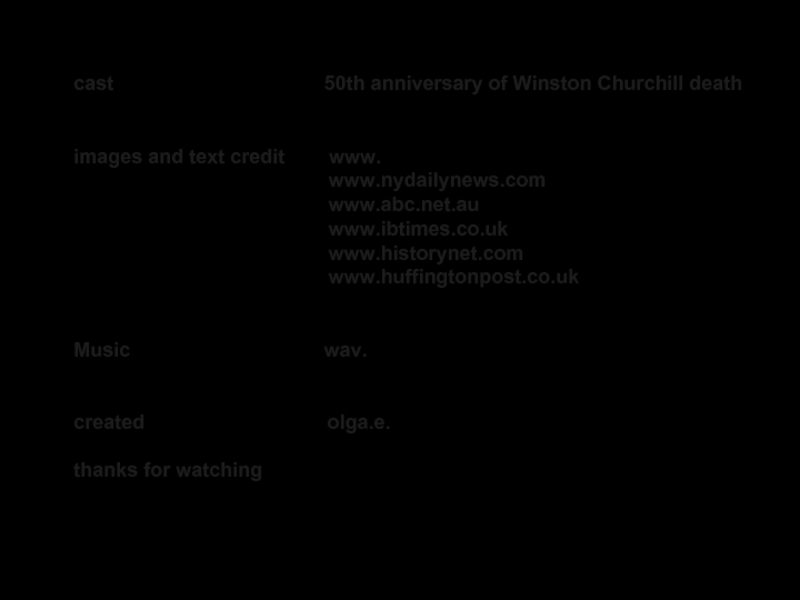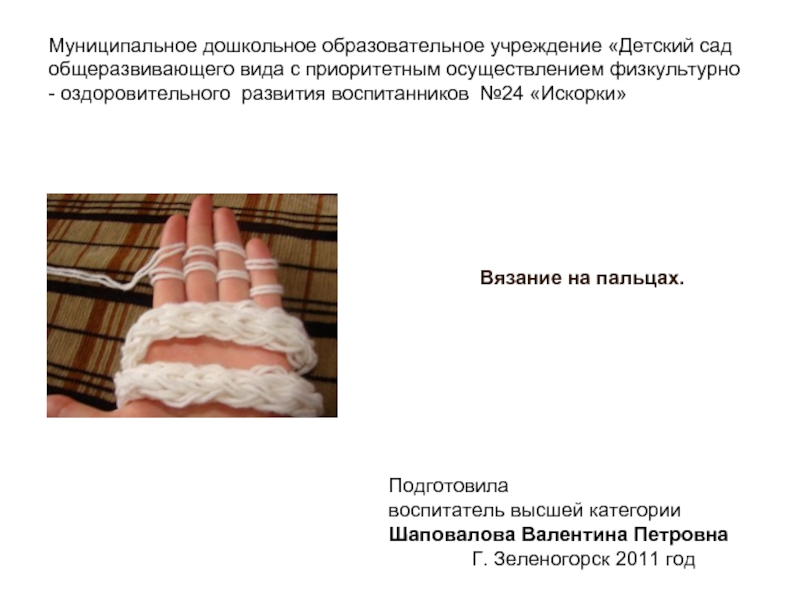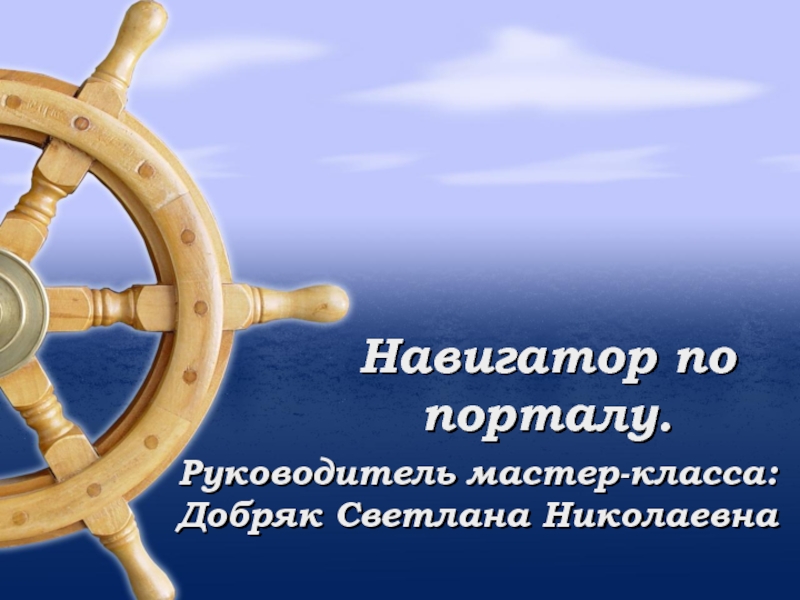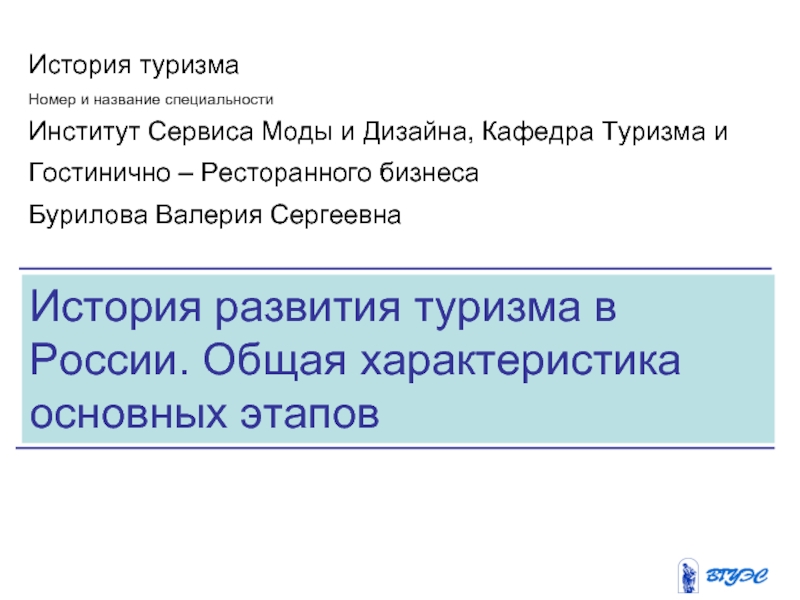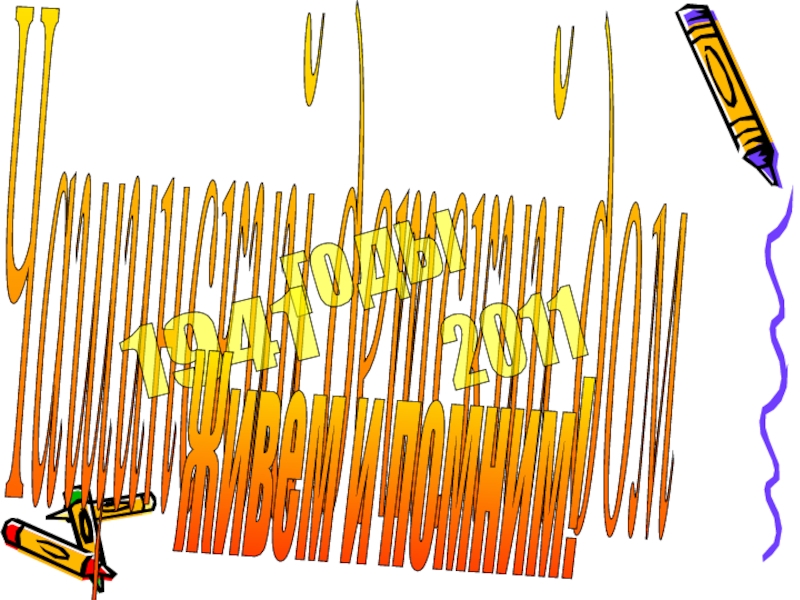- Главная
- Разное
- Дизайн
- Бизнес и предпринимательство
- Аналитика
- Образование
- Развлечения
- Красота и здоровье
- Финансы
- Государство
- Путешествия
- Спорт
- Недвижимость
- Армия
- Графика
- Культурология
- Еда и кулинария
- Лингвистика
- Английский язык
- Астрономия
- Алгебра
- Биология
- География
- Детские презентации
- Информатика
- История
- Литература
- Маркетинг
- Математика
- Медицина
- Менеджмент
- Музыка
- МХК
- Немецкий язык
- ОБЖ
- Обществознание
- Окружающий мир
- Педагогика
- Русский язык
- Технология
- Физика
- Философия
- Химия
- Шаблоны, картинки для презентаций
- Экология
- Экономика
- Юриспруденция
Winston Churchill, 1941 by Yousuf Karsh презентация
Содержание
- 1. Winston Churchill, 1941 by Yousuf Karsh
- 2. 50th anniversary of Winston Churchill death
- 3. Sir Winston Churchill died 50 years ago,
- 4. Sir Winston, his son Randolph and grandson, Winston in coronation robes. Library of Congress
- 6. Remembering the life and legacy of Winston Churchill 50 years after his death
- 7. Sir Winston Churchill, 1881. Here, Churchill is
- 8. Sir Winston Churchill, 1889. Churchill is pictured
- 9. A photograph of the Churchill's : from
- 10. Sir Winston Churchill in 1895 at the
- 11. 1898: Churchill as a war correspondent for
- 12. Left: Winston Churchill (right) with other prisoners
- 13. Sir Winston Churchill in a portrait around
- 14. Sir Winston Churchill in 1908 with wife
- 15. Sir Winston Churchill and his wife Clementine,
- 16. 3 January 1911: Winston Churchill observes the
- 17. Winston Churchill , British politician, giving evidence
- 18. A portrait Winston Churchill in the official
- 19. Circa 1914, just before World War I:
- 20. Budget Day 1927: Chancellor of the Exchequer
- 21. Winston Churchill seen here at
- 22. Sir Winston Churchill in an unknown
- 23. Winson Churchill in 1929 and Chancellor
- 24. Winston Churchill leaves No. 10 Downing Street
- 25. Sir Winston Churchill, 1939. With the outbreak
- 26. Here, Winston Churchill is seen walking
- 27. Winson Churchill tipping his hat
- 28. Britain's Prime Minister Winston Churchill received an
- 29. Sir Winston Churchill, 1944. British Prime Minister
- 30. Sir Winston Churchill, 1945. Here, former Prime
- 31. Winston Churchill makes his famous v
- 32. Sir Winston Churchill, 1953 Winston Churchill was
- 33. Sir Winston Churchill at the age
- 34. Circa 1950: Sir Winston Churchill at the controls of an aeroplane(Keystone/Hulton Archive/Getty Images)
- 35. Winston Churchill with baby Victor Lampson in
- 36. Winston Churchill Churchill, 1940. Winston Churchill and
- 37. Winston Churchill appears calmly happy in London
- 38. 26 October 1951: Winston Churchill, accompanied by
- 39. 29 November 1964: Former Prime Minister Sir
- 40. Britain's Prime Minister Winston Churchill paid a
- 41. 1941 file photo of British Prime Minister
- 42. Churchill silhouetted in the bomb-damaged House of
- 43. Prime Minister Churchill stalks the deck of
- 44. Winston Churchill petting the mascot of HMS
- 45. U.S. President Franklin D. Roosevelt and British
- 46. The wartime prime minister stands with Maj.
- 47. During his stay in the Middle East,
- 48. Prime Minister Winston Churchill inspects the ship’s
- 49. Smiling with pleasure, President Franklin Roosevelt (left)
- 50. Soviet Union Premier Josef Stalin, U.S. President
- 51. Prime Minister, Mr Winston Churchill, chats with
- 52. Gen. Dwight Eisenhower and Prime Minister Winston
- 53. 12 June 1944: Winston Churchill lights a
- 54. British prime minister Winston Churchill (right), dressed
- 55. Winston Churchill with his daughter Mary and
- 56. 11 November 1944: Winston Churchill and General
- 57. Winston Churchill during a tour of the Normandy beach head in June 1944
- 58. February 1945: Winston Churchill, Franklin Delano Roosevelt
- 59. February 1945: Winston Churchill, Franklin Delano Roosevelt
- 60. Churchill with landing party on the east
- 61. 5 March 1945: Prime Minister Winston Churchill
- 62. Prime Minister Winston Churchill of England with
- 63. In this Tuesday, July 17,1945 file picture,
- 64. Picture from July 23, 1945 shows the
- 65. Winston Churchill in a jeep outside the
- 66. 1 July 1945: During his visit to
- 67. Winston Churchill, wearing leather ear-guards, is watching
- 68. A youthful looking Prime Minister Churchill inspecting
- 69. Whilst inspecting reconstruction work in Cherbourg, Winston
- 70. Churchill with General Wladyslaw Sikorski, Prime Minister
- 71. President Roosevelt and Prime Minister Churchill huddle
- 72. Sir Winston Churchill, 1943. Winston Churchill shows
- 73. Churchill patting Rommel, a cocker spaniel owned
- 74. Churchill and President Harry Truman leave for
- 75. Vice President Richard Nixon shakes hands with
- 76. Princess Elizabeth with Queen Elizabeth, Winston Churchill,
- 77. Charlie Chaplin, right, visits with Winston Churchill
- 78. Gen. Dwight D. Eisenhower (left), Atlantic Pact
- 79. Sir Winston Churchill, Queen Elizabeth, Prince Charles
- 80. Churchill waves to crowds in Whitehall on
- 81. Elizabeth II, The Duke Of Edinburgh and
- 82. On Jan. 24, 1965, Sir Winston Churchill
- 83. The funeral of Winston Churchill in 1965.
- 84. 30 January 1965: Dignitaries attend Sir Winston
- 85. The Earl Marshall, the Duke of Norfolk
- 86. 1965 marines lead the funeral march escorting
- 87. 1965 marines lead the funeral march escorting
- 88. 30th January 1965: Soldiers carrying the coffin
- 89. Jan. 30, 1965 file photo of soldiers
- 90. 30th January 1965: The coffin of Sir
- 91. Churchill died at the age of 90
- 92. end
- 93. cast
Слайд 3Sir Winston Churchill died 50 years ago, on 24 January 1965.
Widely regarded as one of the greatest wartime leaders of the 20th century, Churchill served as prime minister of the United Kingdom from 1940 to 1945 and again from 1951 to 1955.
Слайд 7Sir Winston Churchill, 1881. Here, Churchill is pictured in a portrait
at the age of 7. He was born in November of 1874 into the aristocratic family of the Dukes of Marlborough as Winston Leonard Spencer-Churchill and was raised in Dublin, Ireland.Hulton Archive/Getty Images.
Слайд 8Sir Winston Churchill, 1889. Churchill is pictured here as a Harrow
schoolboy at the age of 15. He was made fun of during this time for his red hair and speech impediment that continued throughout his career. He eventually left Harrow in 1893 and applied to attend the Royal Military College in Sandhurst.Hulton Archive/Getty Images.
Слайд 9A photograph of the Churchill's : from right to left, Winston
Churchill when aged about 10, Jennie, his mother and wife a Lord Randolph, a Conservative politician, and his younger brother Jack Churchill. (Photo by Keystone-France/Gamma-Keystone via Getty Images)
Слайд 10Sir Winston Churchill in 1895 at the age of 19 in
military uniform. In December of 1894, Churchill graduated at the top of his class and chose to remain with the cavalry where he was quickly commissioned as a second lieutenant in the 4th Queen's Own Hussars in February in 1895. Churchill travelled to Cuba to observe the Spanish fight the Cuban guerrillas during the Cuban War of Independence that same year where he worked as a journalist for British paper, the Daily Graphic. Churchill also fought and reported on the Greco-Turkish War and the Battle of Omdurman before retiring from the regular army in 1900. Hulton Archive/Getty Images
Слайд 111898: Churchill as a war correspondent for the Morning Post in
South Africa in 1898(Hulton Archive/Getty Images)
Слайд 12Left: Winston Churchill (right) with other prisoners after he was captured
during the Second Boer War in South Africa (1899-1902) Right: A wanted poster issued after he escaped from a POW camp in Pretoria. (Hulton Archive/Getty Images)
Слайд 13Sir Winston Churchill in a portrait around 1904. In 1900, after
leaving the military, Churchill won the seat of Oldham in the 1900 general elections and in Parliament, he became associated wtih the Conservative Party. However, Churchill quickly began to disagree with leading members of his party and in 1904, he crossed the floor to sit as a member of the Liberal Party. In 1905, Churchill became Under-Secretary of State for the Colonies until 1908. Only 2 years later, Churchill was promoted for his first major position as Home Secretary.Roger Viollet/Getty Images.
Слайд 14Sir Winston Churchill in 1908 with wife Clementine. .In 1904, Churchill
met his future wife Clementine Hozier at a ball but they didn't end up talking to each other until 1908 when they met again at a dinner party. This time, Churchill found himself seated next to Clementine and they quickly fell in love and ended up marrying the same year. Hulton Archive/Getty Images.
Слайд 15Sir Winston Churchill and his wife Clementine, during a visit to
Aldershot, Hampshire, for army manueuvres in 1910 [PA]
Слайд 163 January 1911: Winston Churchill observes the Siege of Sidney Street.
Hundreds of heavily-armed City and Metropolitan police fought a pitched battle against two anarchists in Stepney, London, following an armed robbery in December 1910. The Siege ended with the deaths of two members of a politically motivated gang of burglars, three policemen and a firefighter, and sparked a major political row over the involvement of the Home Secretary, Winston Churchill(Hulton Archive/Getty Images)
Слайд 17Winston Churchill , British politician, giving evidence during the English anarchists'
trial in 1912. Branger/Roger Viollet/Getty Images
Слайд 18A portrait Winston Churchill in the official dress of First Lord
of the Admiralty taken in 1914 at the beginning of World War I [AFP/Getty Images]
Слайд 19Circa 1914, just before World War I: Winston Churchill, then First
Lord of the Admiralty, in flying helmet, stands beside an early army biplane(AFP)
Слайд 20Budget Day 1927: Chancellor of the Exchequer Winston Churchill, on his
way from 11 Downing Street to present his Budget to the House of Commons(Fox Photos/Getty Images)
Слайд 21
Winston Churchill seen here at his desk in 1929.In 1911,
Churchill began serving as First Lord of the Admiralty and continued doing so into the World War 1. While in command, Churchill helped modernize the British Navy by emphasizing the use of aircrafts, eventually setting up the Royal Navy Air Service and pushing for the use of oil over coal powered engines. In the years that followed, Churchill also served as Minister of Munitions from 1917 to 1919. Evening Standard/Getty Images
Слайд 22 Sir Winston Churchill in an unknown date. In 1929, the
Conservative Party was defeated and after being portrayed as a right-wing extremist, Churchill decided to take some time away from the government. In the years that followed, Churchill concentrated on writing and publishing books including a biography of his ancestor John Churchill, the first Duke of Marlborough and "A History of the English Speaking Peoples." Winston Churchill became one of the best paid writers of his time.Fox Photos/Getty Images
Слайд 23 Winson Churchill in 1929 and Chancellor of the Exchequer. From
1919 to 1922, Churchill served as Secretary of State for War and Air followed by Secretary of State for the Colonies under Prime Minister David Lloyd George. After Churchill was defeated in the Liberal Party as a Member of Parliament in 1922, he rejoined the Conservative Party. In 1924, Churchill was named Chancellor of the Exchequer, and served until 1929, as seen in this photo from May of 1929. While acting as Chancellor of the Exchequer, Churchill returned Britain to the Gold Standard, essential using gold for money but this only brought deflation, unemployment and strikes. Fox Photos/Getty Images
Слайд 24Winston Churchill leaves No. 10 Downing Street after meeting with British
Prime Minister Neville Chamberlain in London, England, Sept. 10, 1938. The prime minister met with ministers and diplomats to discuss the Sudeten-Czech crisis. (AP Photo)
Слайд 25Sir Winston Churchill, 1939. With the outbreak of World War 2,
Winston Churchill was appointed as First Lord of the Admiralty and a member of the War Cabinet in 1939. Here, Churchill can be seen making a recruitment speech at London's Mansion House for the terrirorial army on April 24, 1939.Keystone-France/Getty Images
Слайд 26 Here, Winston Churchill is seen walking with a cane in
1940. In 1940, after Lord Halifax turned down the post of Prime Minister, former Prime Minister Neville Chamberlain advised the King that he wanted someone who would command the support of all three parties and recommended Churchill. A few days later, King George VI asked Churchill to be Prime Minister of the United Kingdom in addition to Minister of Defense. H. F. Davis/Topical Press Agency/Getty Images
Слайд 27
Winson Churchill tipping his hat in 1941. While serving his
first term as Prime Minster, Winston Churchill also served as Leader of the Conservative Party from 1940 and 1955. During the course of the Second World War, Churchill's popularity grew as he was confident that the Allies would eventually win the war. Keystone/Getty Images
Слайд 28Britain's Prime Minister Winston Churchill received an honorary degree of Doctor
of Laws at the Harvard University, U.S.A. After the degree had been conferred Mr. Churchill made a speech which was broadcast. He afterwards spoke to a big gathering of naval and army cadets who are training at the University. The Prime Minister gives the famous V-sign to acknowledgment to the cheers of the crowd gathered outside the University, at Cambridge, Massachusetts, on Sept. 13, 1943. (AP Photo)
Слайд 29Sir Winston Churchill, 1944. British Prime Minister Sir Winston Churchill slumps
in his seat while smoking one of his trademark cigars as he watches an assault against enemy positions north of Florence, Italy, from the observation post of a battery of the 66 Lowland Medium Regiment, Royal Artillery, on Aug. 20, 1944. AFP PHOTO
Слайд 30Sir Winston Churchill, 1945. Here, former Prime Minster Winston Churchill makes
a speech on BBC radio announcing that the war with Germany had been won on May 8, 1945. People praised Churchill for his aid in victory as he reassured them that Japan would be defeated as well. Even though he generated much support from the British population, he was defeated in the 1945 election and was not reelected for prime minster. Instead, Churchill became Leader of the Opposition Party for six years and continued to have an impact on world affairs. Major Horton/IWM/Getty Images
Слайд 31 Winston Churchill makes his famous v for victory sign. After
the general election of 1951, Churchill returned to government and was appointed as Minister of Defense in October. The same month, Churchill also became Prime Minister once again and remained in position until 1955. In 1953, Churchill was knighted by Queen Elizabeth II. Here, Churchill is making his infamous "V" sign for "victory.". AFP/Getty Images
Слайд 32Sir Winston Churchill, 1953 Winston Churchill was a Bulldog at spirit,
but he has a real soft spot for his French miniature poodles. The former Prime Minister was left absolutely devastated when his pet pooch Rufus was hit by a car in 1947, he received a second poodle, which he called Rufus II. Here, Winston makes sure Rufus II (pictured) rides alongside him while the pair are chauffeured around London in circa 1953. Keystone-France/Getty Images
Слайд 33 Sir Winston Churchill at the age of 90. Churchill suffered
a severe stroke that left him extremely ill in Jan. 1965. Nine days later, he died at his home in London at the age of 90 on Jan. 24, 1965. He is pictured here in July of 1964, only months before his 90th, and last, birthday. Reg Speller/Fox Photos/Getty Images
Слайд 34Circa 1950: Sir Winston Churchill at the controls of an aeroplane(Keystone/Hulton
Archive/Getty Images)
Слайд 35Winston Churchill with baby Victor Lampson in Egypt. Churchill, wearing his
world famous siren suit with Victor Lampson, the son of Sir Miles Lampson, the British ambassador in the gardens of the British embassy in Cairo, Egypt in August 1942. IWM (E 15347)
Слайд 36Winston Churchill Churchill, 1940. Winston Churchill and his wife Clementine sit
on board a naval auxiliary patrol vessel as it travels down the Thames towards docks in east London during the Second World War on Sept. 25, 1940. IWM/Getty Images
Слайд 37Winston Churchill appears calmly happy in London on Oct. 26, 1947
as his wife Clementine whispers congratulations as late returns assured his conservative party of victory in the British national election. Election figures clinched for Churchill another term as Prime Minister and the end of the Labor government of Clement Attlee. (AP Photo)
Слайд 3826 October 1951: Winston Churchill, accompanied by Lady Clementine, gives his
famous 'V for victory' sign after hearing the results of a poll returning him as MP in the general election(J. A. Hampton/Topical Press Agency/Getty Images)
Слайд 3929 November 1964: Former Prime Minister Sir Winston Churchill and his
wife Lady Clementine Churchill celebrate his 90th birthday at their home in Hyde Park, London(Terry Fincher/Express/Getty Images)
Слайд 40Britain's Prime Minister Winston Churchill paid a visit to the north
east of England on August 1, 1940, to inspect coastal fortifications and defense works. Winston Churchill takes a tommy gun and tries it out. (AP Photo)
Слайд 411941 file photo of British Prime Minister Winston Churchill as walks
on the deck of H.M.S. Prince of Wales [AP]
Слайд 42Churchill silhouetted in the bomb-damaged House of Commons, May 1941. The
Churchill Archives Centre, Churchill College, Cambridge.
Слайд 43Prime Minister Churchill stalks the deck of the HMS Prince of
Wales during the Atlantic Conference, Newfoundland, August 1941. Churchill and President Franklin Roosevelt produced the Atlantic Charter, which hoped for a secure world of self-government after ‘the final destruction of the Nazi tyranny.’ Universal History Archive/Getty Images
Слайд 44Winston Churchill petting the mascot of HMS Prince of Wales, Blackie,
during the Atlantic Charter Conference, Placentia Bay, Newfoundland, Aug 1941 Horton/Imperial War Museum
Слайд 45U.S. President Franklin D. Roosevelt and British Prime Minister Winston Churchill
confer on deck aboard the British battleship HMS Prince of Wales during the five-day Atlantic Conference at Argentia Bay, off Newfoundland, Canada, on Aug. 10, 1941. Listening behind them at left is Admiral E.J. King, commander of the U.S. Navy Atlantic Fleet, and Admiral Harold R. Stark, chief of U.S. Naval operations. (AP Photo)
Слайд 46The wartime prime minister stands with Maj. Gen. Brian Horrocks (closest
to the camera) on a tank during an inspection of the 9th Armoured Division, near Newmarket, U.K., May 16, 1942. Iwm/Getty Images
Слайд 47During his stay in the Middle East, Britain's Prime Minister Winston
Churchill paid a visit to the Alamein area, meeting brigade and divisional commanders, visiting a gun site, and inspecting personnel of Australian and South African divisions, on August 19, 1942 in the western desert. AP Photo
Слайд 48Prime Minister Winston Churchill inspects the ship’s company of H.M.S. Scylla
in London on 21 October 1942 [AP]
Слайд 49Smiling with pleasure, President Franklin Roosevelt (left) drove up to the
White House on May 11, 1943 in Washington accompanied by Britain's Prime Minister Winston Churchill. Churchill arrived in Washington against a background of the Allied victory in Tunisia and German jitters over invasion. (AP Photo)
Слайд 50Soviet Union Premier Josef Stalin, U.S. President Franklin D. Roosevelt and
British Prime Minister Winston Churchill sit at the Teheran Conference in the capital of Iran, in this Nov. 28, 1943. AP Photo File
Слайд 51Prime Minister, Mr Winston Churchill, chats with Field Marshal Sir Alan
Brooke, Chief of the Imperial General Staff, on the bridge of the warship HMS KELVIN during their voyage across the English Channel en route to General Bernard Montgomery's Headquarters in Normandy, France, 12 June 1944 (National Archives).
Слайд 52Gen. Dwight Eisenhower and Prime Minister Winston Churchill are shown strolling
prior to an inspection of U.S. Army glider and paratroopers in England, March 23, 1944. After inspection and witnessing a massed descent, Churchill addressed the paratroopers. (AP Photo)
Слайд 5312 June 1944: Winston Churchill lights a cigar in the back
of a jeep while touring the Normandy beaches with General Montgomery(Imperial War Museums)
Слайд 54British prime minister Winston Churchill (right), dressed in his siren suit
and dressing gown with US general Dwight D Eisenhower in Tunisia on Christmas Day 1943. IWM (NA 10074)
Слайд 55Winston Churchill with his daughter Mary and General Sir Frederick Pile
(GOC Anti-Aircraft Command) watch anti-aircraft guns in action against V1 flying bombs, 30 June 1944 [PA]
Слайд 5611 November 1944: Winston Churchill and General Charles de Gaulle walk
down the Avenue des Champs-Elysee in Paris during the French Armistice Day parade(Imperial War Museums)
Слайд 58February 1945: Winston Churchill, Franklin Delano Roosevelt and Joseph Stalin pose
at the Yalta Conference, a meeting to discuss the reorganisation of post-war Europe(Hulton Archive/Getty Images)
Слайд 59February 1945: Winston Churchill, Franklin Delano Roosevelt and Joseph Stalin pose
at the Yalta Conference, a meeting to discuss the reorganisation of post-war Europe(Hulton Archive/Getty Images)
Слайд 60Churchill with landing party on the east bank of the Rhine,
south of Wesel, March 25, 1945 (National Archives).
Слайд 615 March 1945: Prime Minister Winston Churchill chalks the message "A
Present for Hitler" onto a shell which he then fired from a 9.2mm gun at the eastern edge of Goch, Germany(Imperial War Museums)
Слайд 62Prime Minister Winston Churchill of England with Gen. William Hood Simpson,
Commander in Chief of the U.S. 9th Army, tour the ruins of Julich, Germany, on the Siegfried Line, March 7, 1945. AP Photo
Слайд 63In this Tuesday, July 17,1945 file picture, President Harry Truman, center,
talks with Soviet leader Josef Stalin, left, and British Prime Minister Winston Churchill, at the Potsdam Conference in Potsdam, Germany, near Berlin. Historians declare the conference was the start of the Cold War, the division of Germany and Europe into opposing camps. AP Photo
Слайд 64Picture from July 23, 1945 shows the handshake between Winston Churchill,
left, Harry S. Truman and Josef Stalin, right in front of Churchill`s residence in Potsdam, Germany. On July 17,1945 began the last meeting of the "Big Three". AP-PHOTO/FLS
Слайд 65Winston Churchill in a jeep outside the German Reichstag during a
tour of the ruined city of Berlin on 16 July 1945, PA
Слайд 661 July 1945: During his visit to a conquered Berlin, Winston
Churchill sits on one of the damaged chairs from Hitler's bunker(Fred Ramage/Keystone/Getty Images)
Слайд 67Winston Churchill, wearing leather ear-guards, is watching gunnery practice on board
HMS RENOWN whilst he was returning from Canada (National Archives).
Слайд 68A youthful looking Prime Minister Churchill inspecting Civil Defense personnel in
London at the outbreak of the Second World War (National Archives).
Слайд 69Whilst inspecting reconstruction work in Cherbourg, Winston Churchill has his cigar
lit by a French worker. Churchill is travelling with Major General Cecil Moore who is the Chief Engineer of the European Theatre of Operations, US Army. The crowd of French civilians in background are clearly amused by the event (National Archives).
Слайд 70Churchill with General Wladyslaw Sikorski, Prime Minister of the Polish Government-in-Exile
and Commander-in-Chief of the Polish Armed Forces and General Charles de Gaulle, General Officer Commanding French Forces, following a tank demonstration on February 14, 1941 (National Archives).
Слайд 71President Roosevelt and Prime Minister Churchill huddle at the Casablanca Conference,
January 1943. The conference finalized the Allies’ strategy for defeating the Axis powers and settled on a policy of ‘unconditional surrender.’ IWM/GETTY IMAGES
Слайд 72Sir Winston Churchill, 1943. Winston Churchill shows off his party trick,
balancing a top hat on his walking stick as his amused daughter Mary watches on outside the Mansion House in London on June 30, 1943. Fox Photos/GettY Images
Слайд 73Churchill patting Rommel, a cocker spaniel owned by General Sir Bernard
Montgomery (Monty) in Normandy in August 1944. IWM (B 8766)
Слайд 74Churchill and President Harry Truman leave for Fulton, Mo., where Churchill
would make a famous speech warning of the danger of Soviet expansionism. ‘From Stettin in the Baltic to Trieste in the Adriatic,’ Churchill warned on March 5, 1946, ‘an iron curtain has descended across the continent.’ Fox Photos/Getty Images
Слайд 75Vice President Richard Nixon shakes hands with Prime Minister Winston Churchill
at Washington National Airport on June 29, 1954 as he bid farewell to the British diplomat as he leaves for Canada after a weekend of talks with President Eisenhower on world problems. Sir Anthony Eden, British Foreign Minister, who accompanied Churchill, and United States Secretary of State John Foster Dulles are at center. AP Photo
Слайд 76Princess Elizabeth with Queen Elizabeth, Winston Churchill, King George VI and
Princess Margaret on the balcony of Buckingham Palace on VE Day, 1945 Photo: PA
Слайд 77Charlie Chaplin, right, visits with Winston Churchill September 19, 1931. Chaplin
was the guest of Churchill at the politician's home at Westerham, Kent, England. Chaplin is visiting in Europe in connection with his latest film. (AP Photo )AP- NEW YORK
Слайд 78Gen. Dwight D. Eisenhower (left), Atlantic Pact supreme commander, and Winston
Churchill, Britain’s wartime prime minister, exchange warm greetings at party in London’s Grosvenor House on July 3, 1951. The occasion was a dinner given by the English Speaking Union in honor of the General and Mrs. Eisenhower. AP Photo
Слайд 79Sir Winston Churchill, Queen Elizabeth, Prince Charles and Princess Anne, 1953.
Elizabeth II, Queen of England with Prince Charles and Princess Anne chats to Winston Churchill in circa 1953. The same year, Churchill was knighted by Queen Elizabeth on April 24, 1953. Central Press/Getty Images
Слайд 80Churchill waves to crowds in Whitehall on the day he broadcast
to the nation that the war with Germany had been won, 8 May 1945. IWMCollections
Слайд 81Elizabeth II, The Duke Of Edinburgh and Winston Churchill leaving Downing
Street, April 4, 1955 [Getty Images]
Слайд 82On Jan. 24, 1965, Sir Winston Churchill passed away at the
age of 90 due to a severe stroke. 50 years later, the British Prime Minister's legacy still lives on as he is considered one of the greatest statesmen of the 20th century.
Слайд 83The funeral of Winston Churchill in 1965.
Churchill's funeral was the
largest state funeral in world history up to that point in time with representatives from 112 nations. In Europe 350 million people watched the funeral on television on Jan. 30, 1965. Here, Lady Clementine Churchill, wife of Winston (second left) and son Randolph (c.) follow the coffin of Churchill. Winston Churchill was a Nobel Prize winner in Literature and an Honorary Citizen of the U.S. A BBC poll in 2002 of the "100 Greatest Britons" proclaimed his as "The Greatest of Them All" as he was also named one of the most influential leaders in history by TIME Magazine. Romano Cagnoni/Getty Images
Слайд 8430 January 1965: Dignitaries attend Sir Winston Churchill's funeral ceremony at
St Paul's Cathedral in London(AFP)
Слайд 85The Earl Marshall, the Duke of Norfolk walking in front of
Brigade of Guards coffin bearer party at Winston Churchill's state funeral [EXPRESS NEWSPAPERS]
Слайд 861965 marines lead the funeral march escorting Britain's former prime minister
Winston Churchill's coffin as the crowd pays respects on Ludgate Hill in London. [AFP/Getty Images]
Слайд 871965 marines lead the funeral march escorting Britain's former prime minister
Winston Churchill's coffin as the crowd pays respects on Ludgate Hill in London. [AFP/Getty Images]
Слайд 8830th January 1965: Soldiers carrying the coffin of Sir Winston Churchill
draped with a Union Jack up the steps of St Paul's London. Bob Haswell/Express/Getty Images
Слайд 89Jan. 30, 1965 file photo of soldiers as they carry the
flag-draped coffin of Sir Winston Churchill up steps of St. PaulÌs Cathedral in London for a funeral service. [AP]
Слайд 9030th January 1965: The coffin of Sir Winston Churchill is carried
down the nave of St Paul's Cathedral. William Vanderson/Fox Photos/Getty Images
Слайд 91Churchill died at the age of 90 on Jan. 24, 1965.
His coffin passed through Fleet Street, London, on Jan. 31. After a state funeral at St. Paul’s Cathedral, he was buried in the Churchill family plot near Blenheim Palace, where he was born. Gamma-keystone/Getty Images
Слайд 93cast
50th anniversary of Winston Churchill death
images and text credit www.
www.nydailynews.com
www.abc.net.au
www.ibtimes.co.uk
www.historynet.com
www.huffingtonpost.co.uk
Music wav.
created olga.e. thanks for watching
images and text credit www.
www.nydailynews.com
www.abc.net.au
www.ibtimes.co.uk
www.historynet.com
www.huffingtonpost.co.uk
Music wav.
created olga.e. thanks for watching
